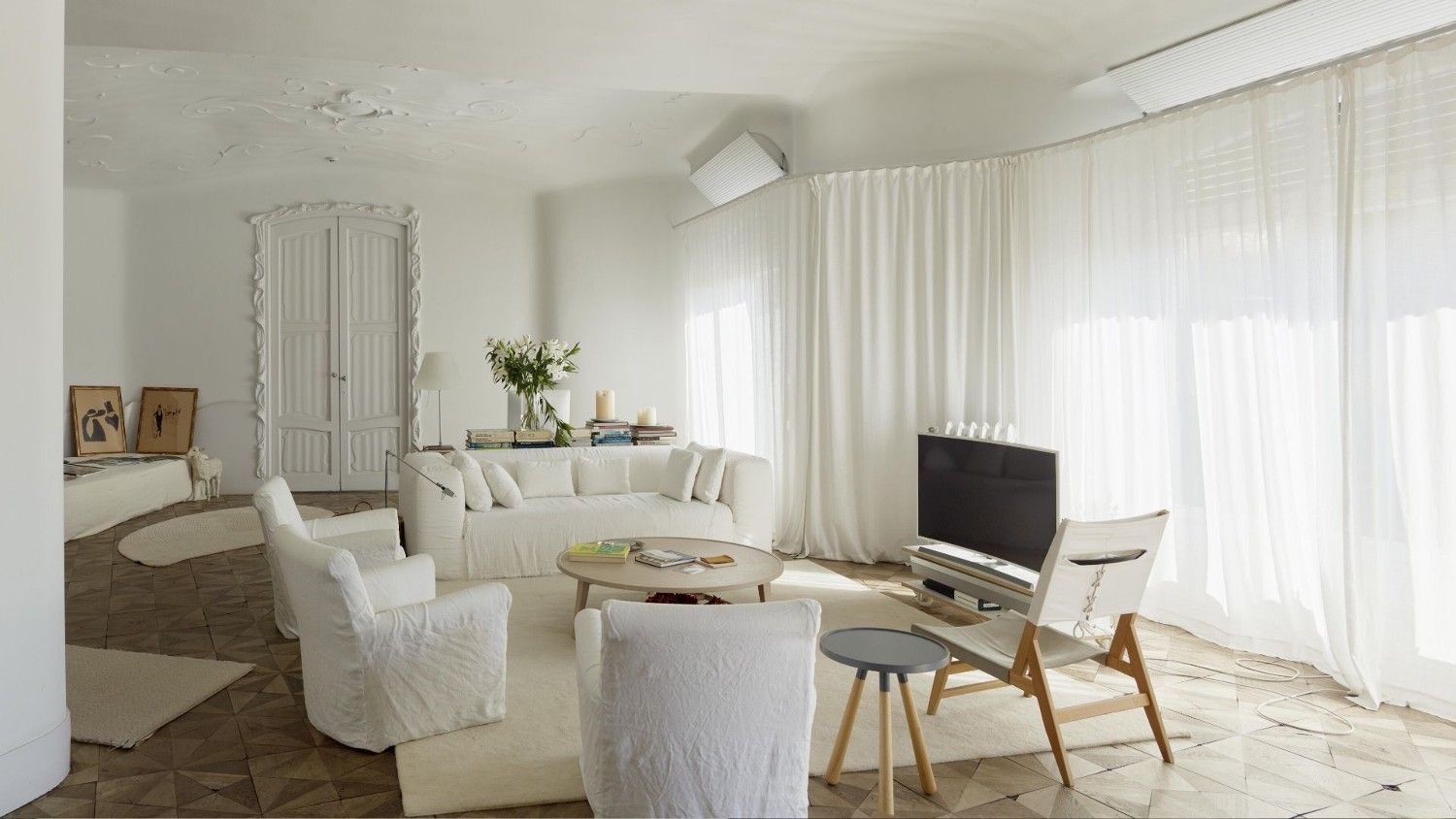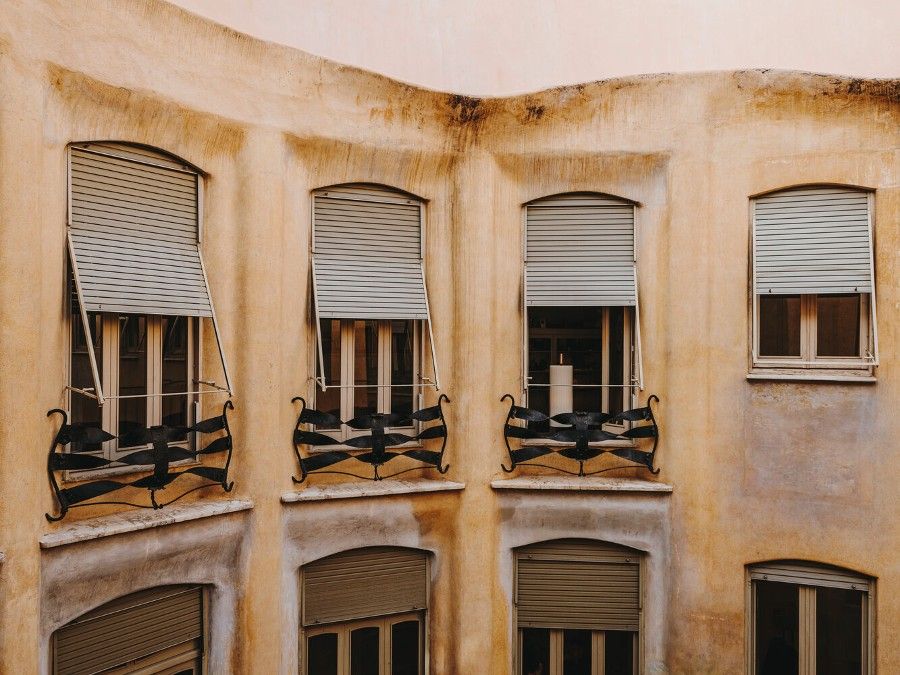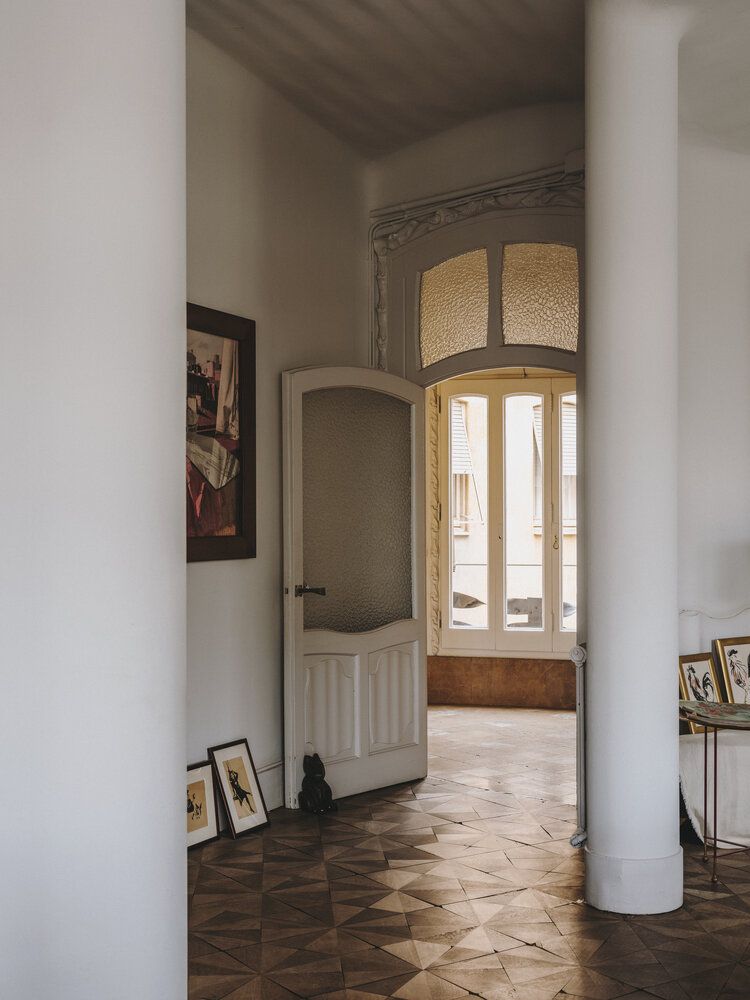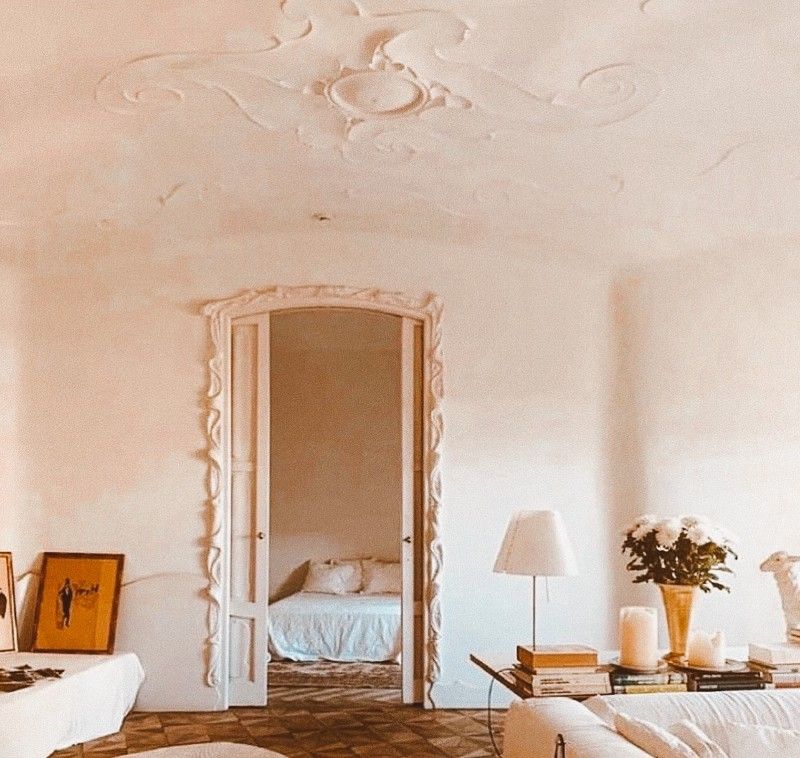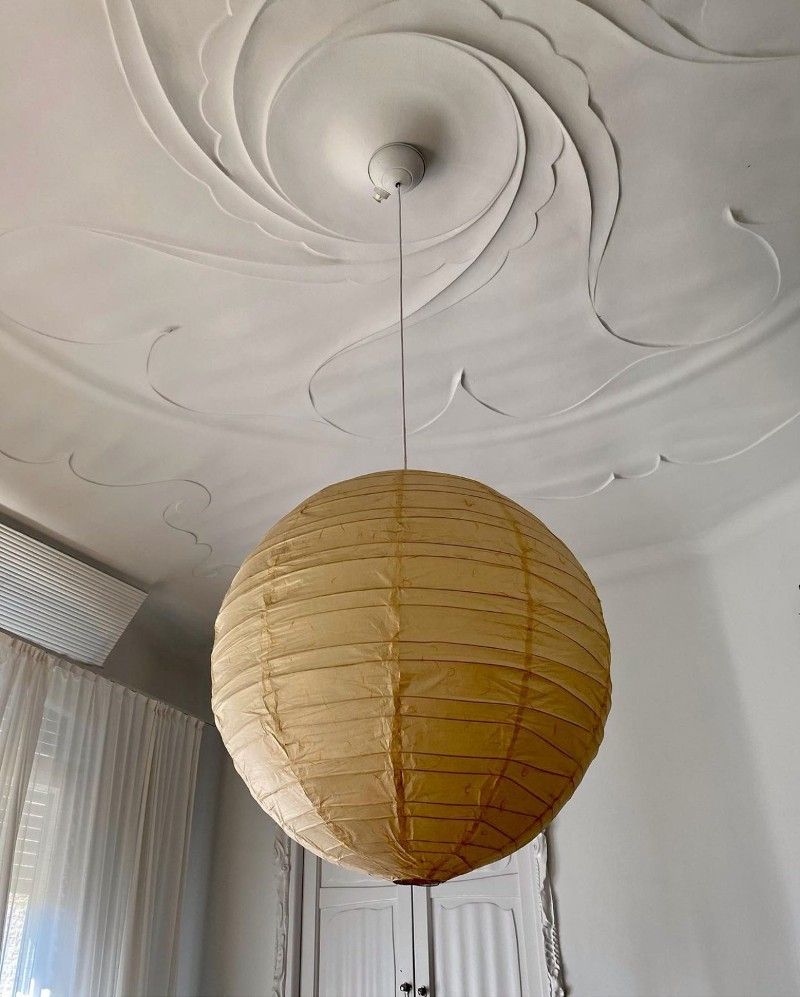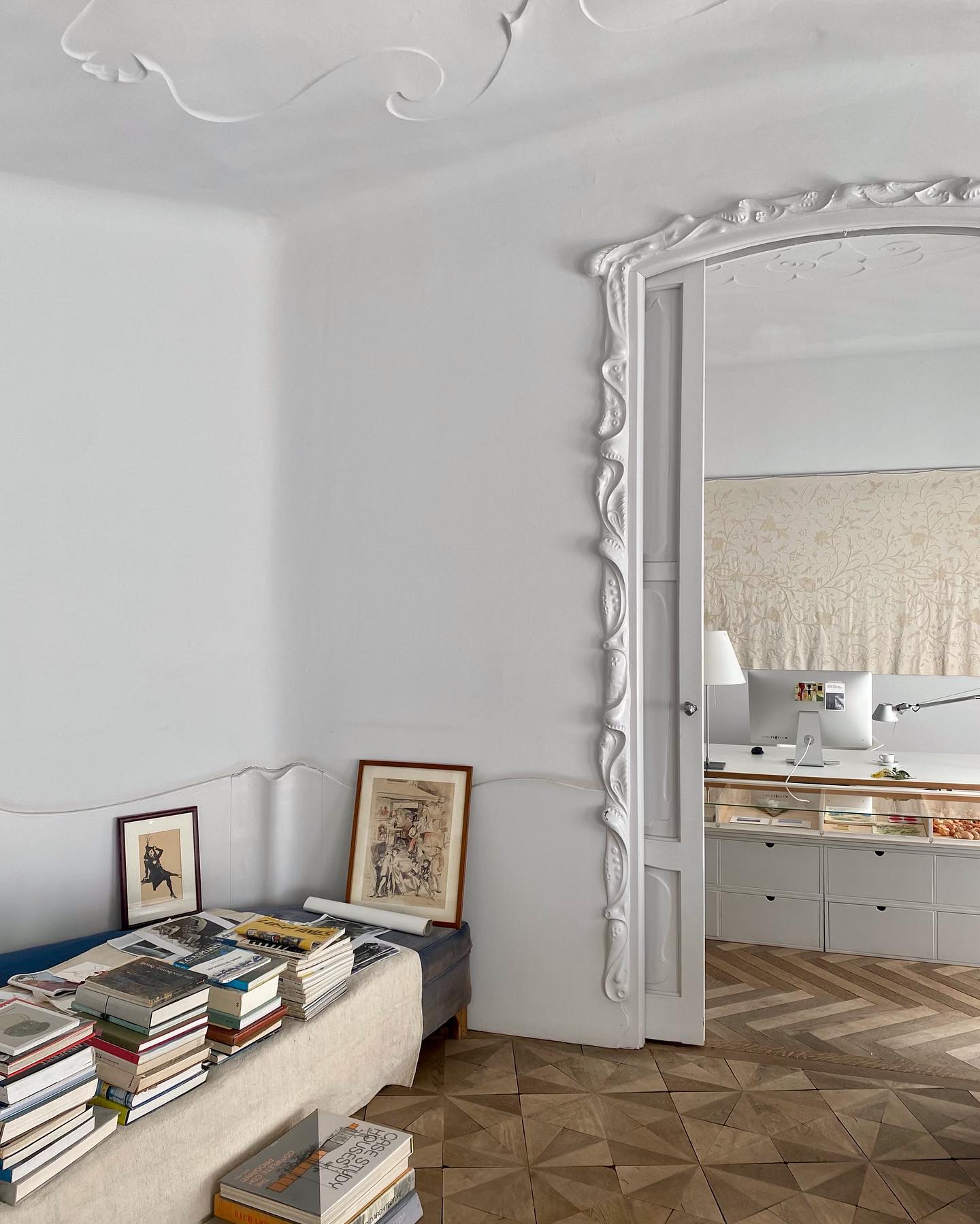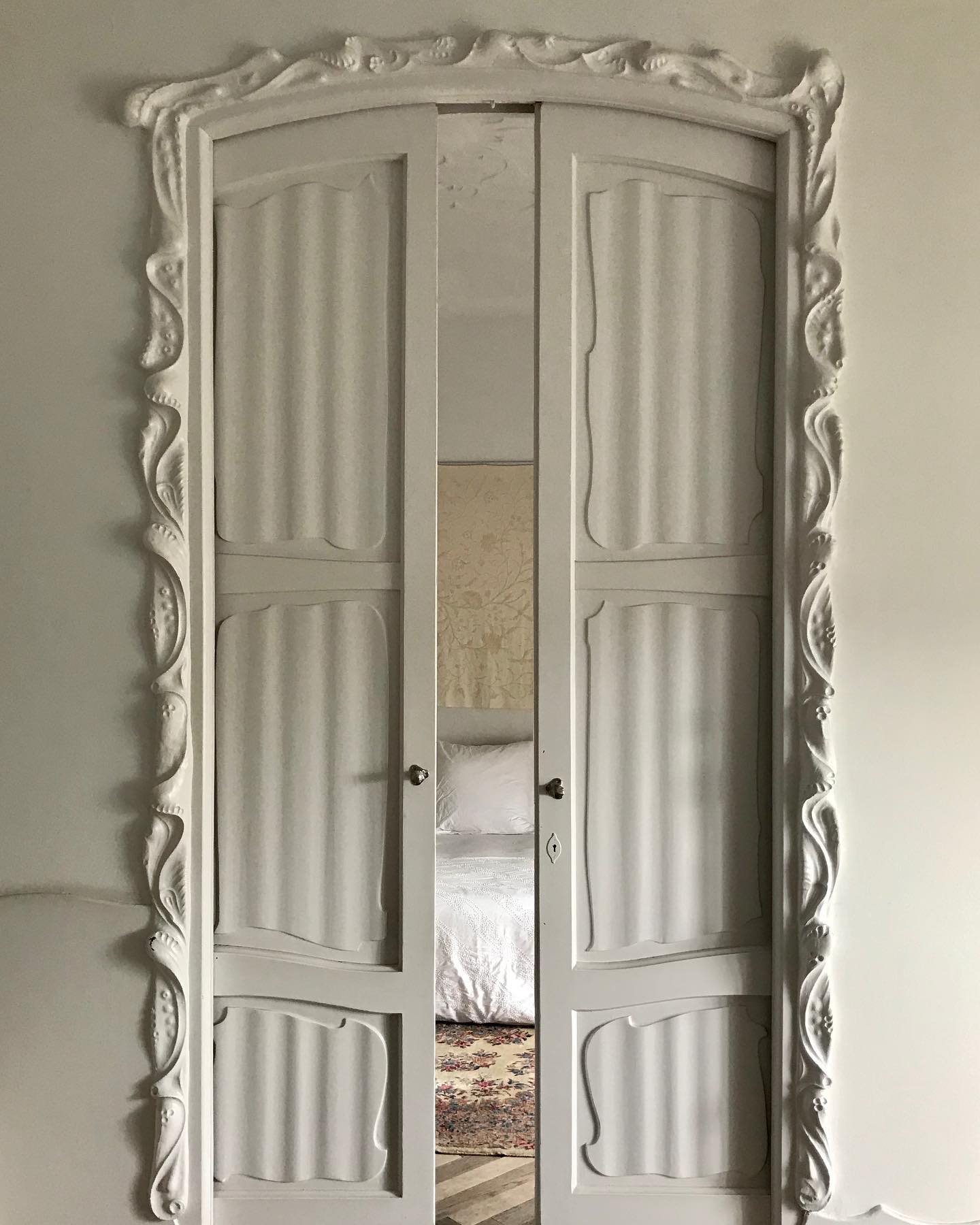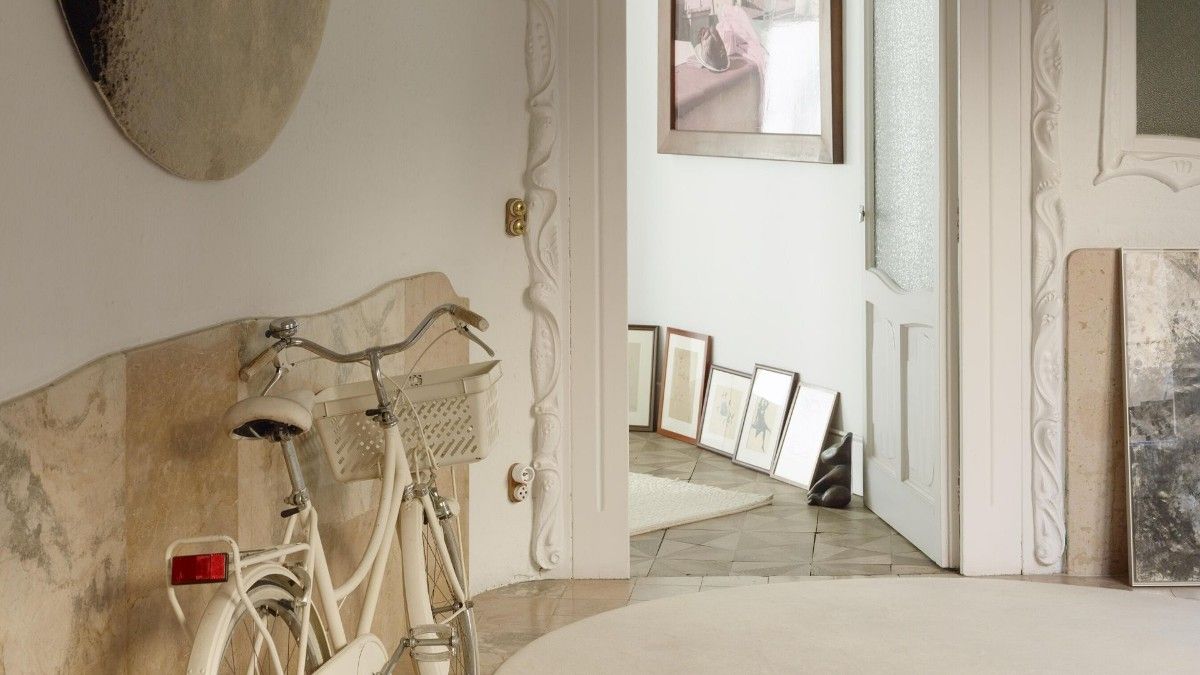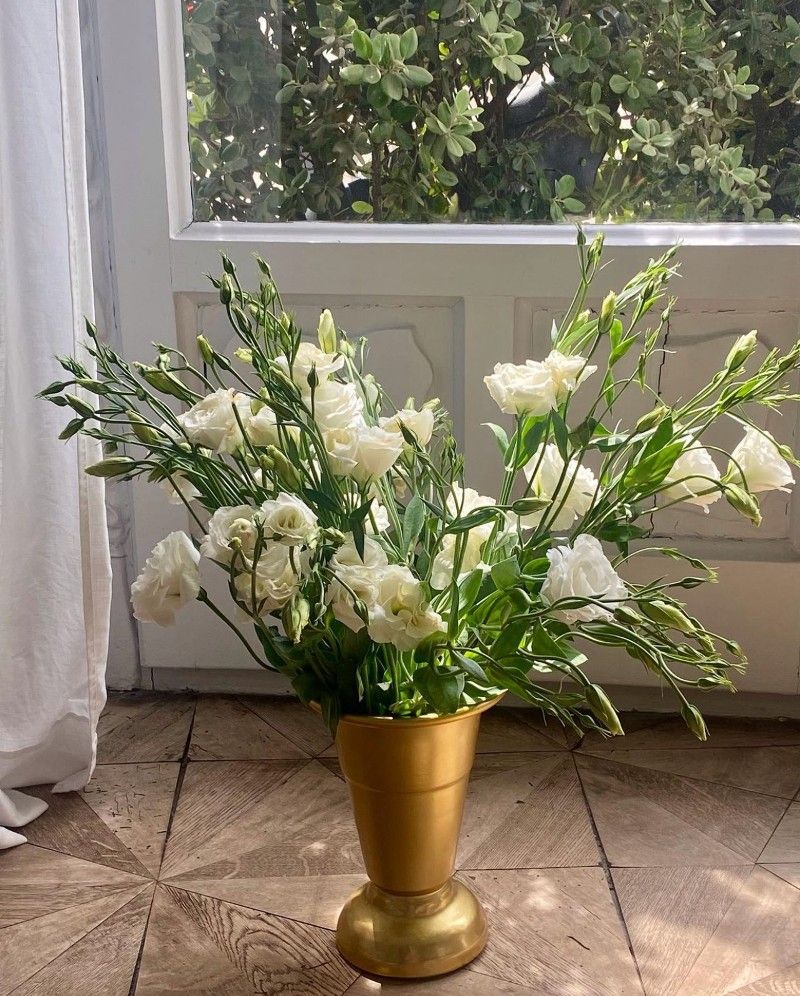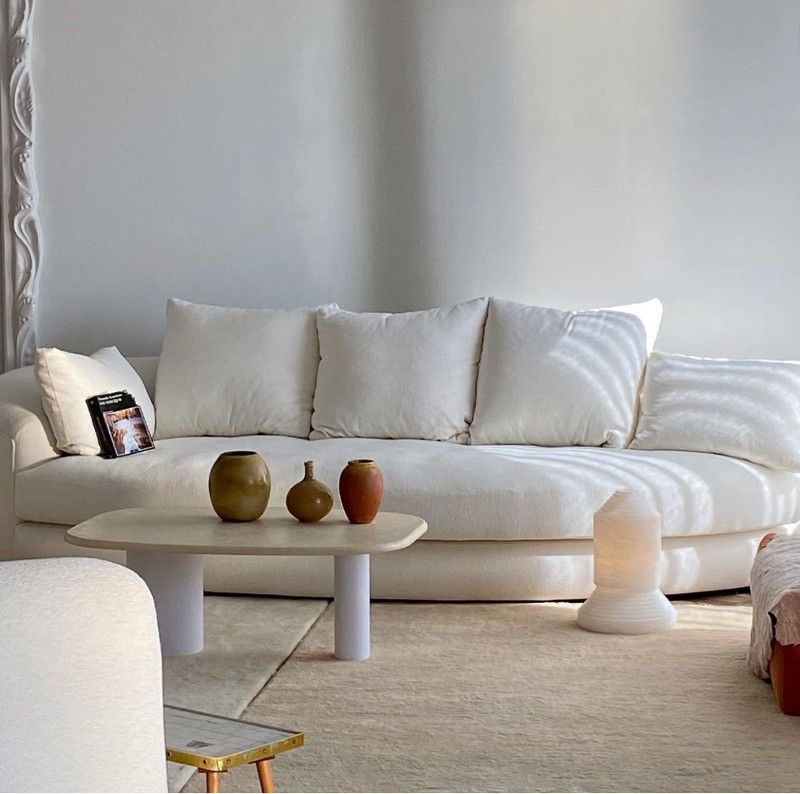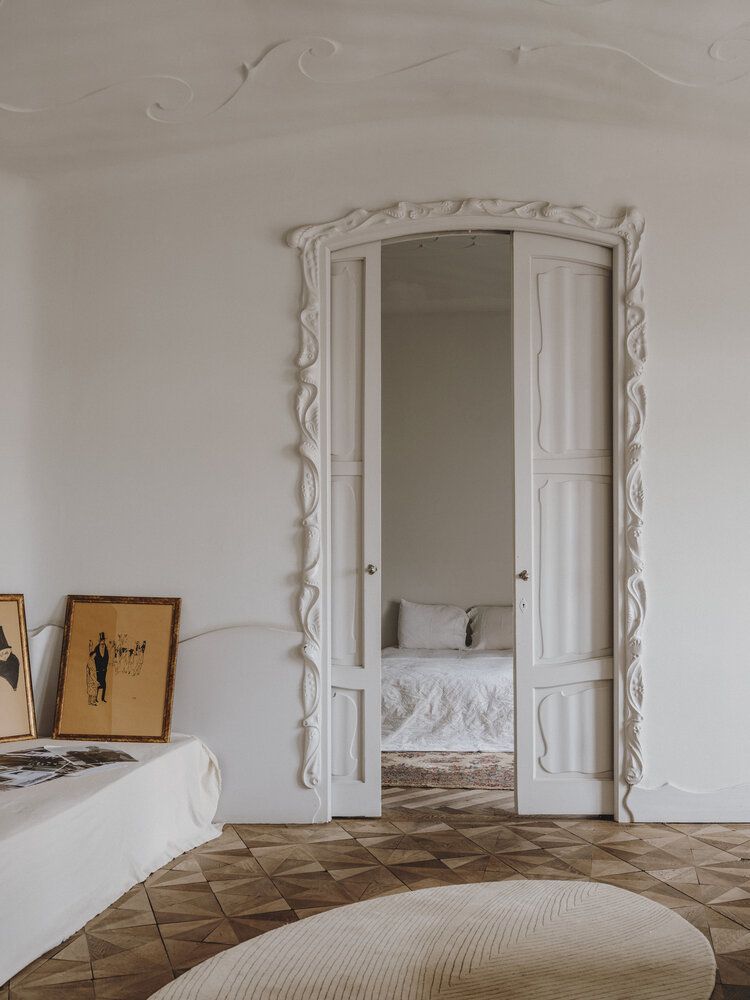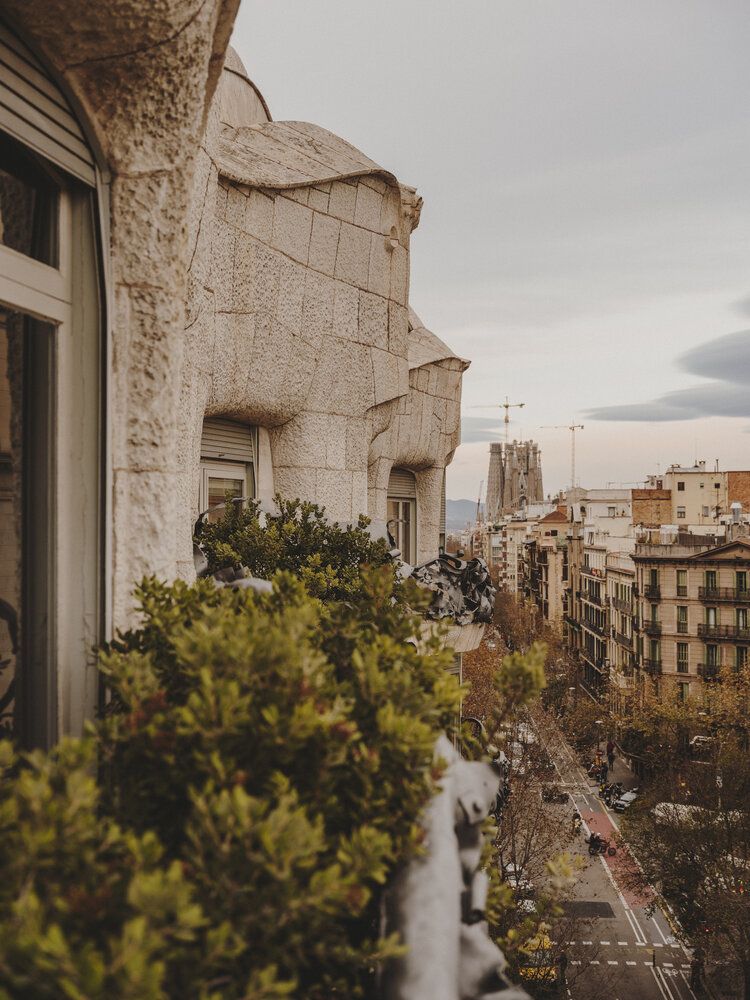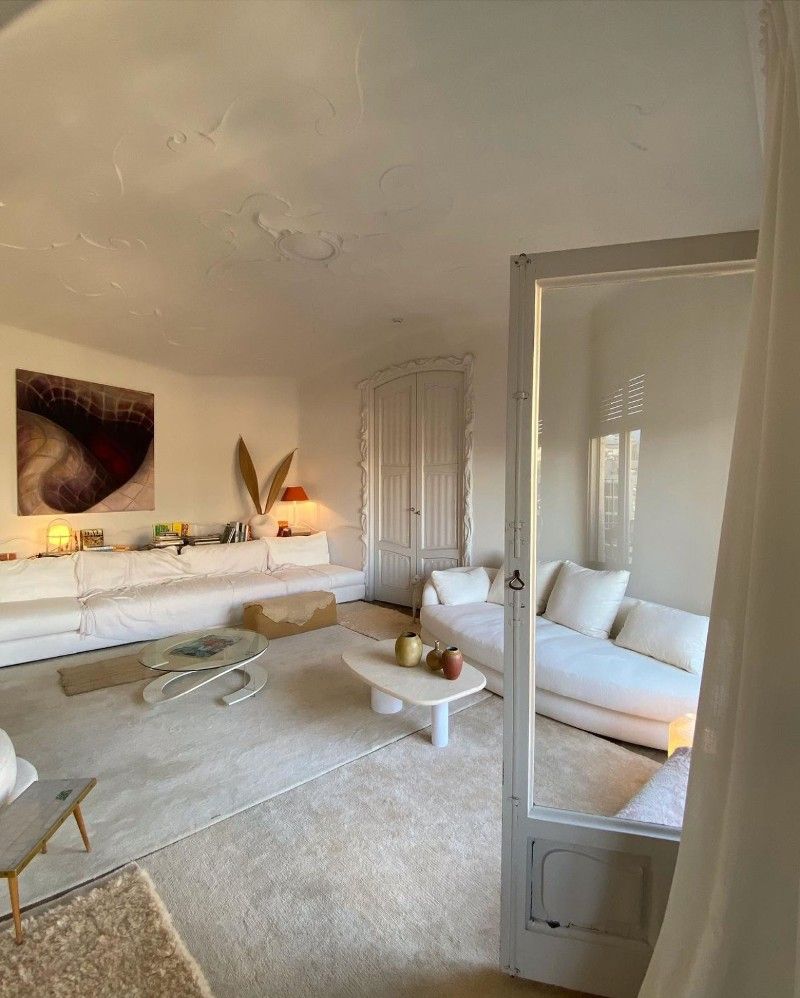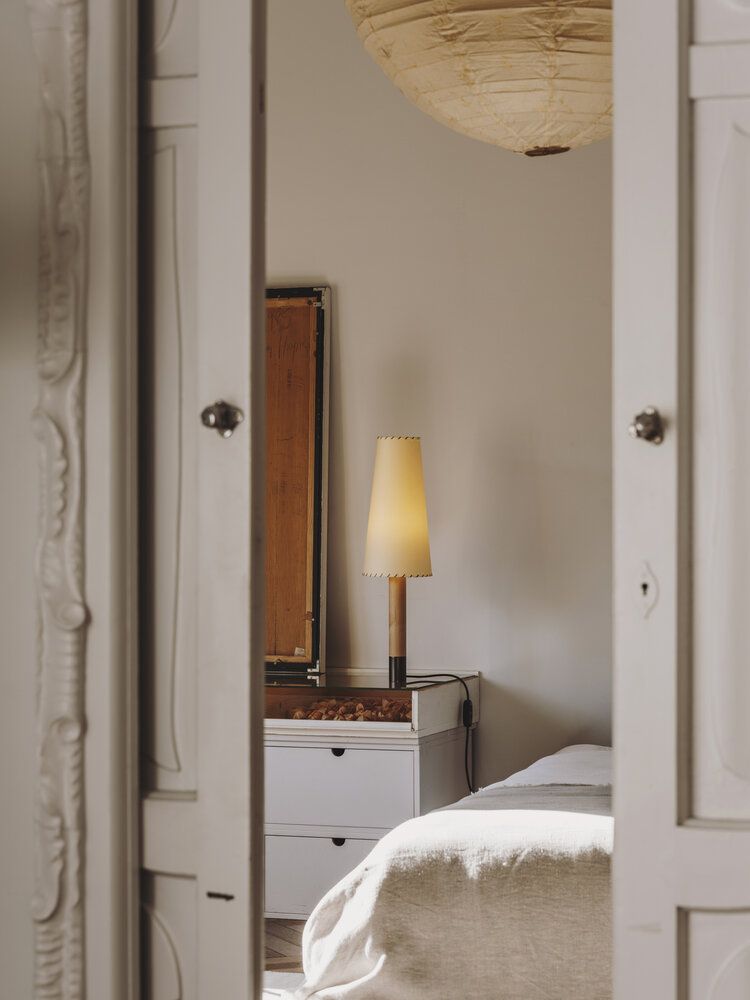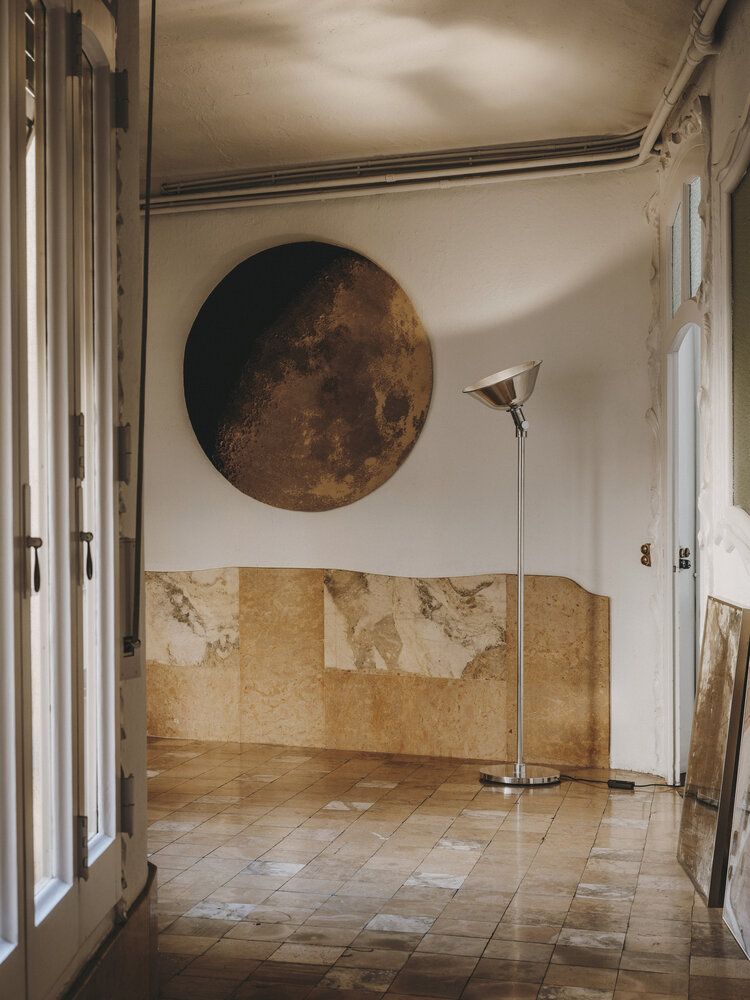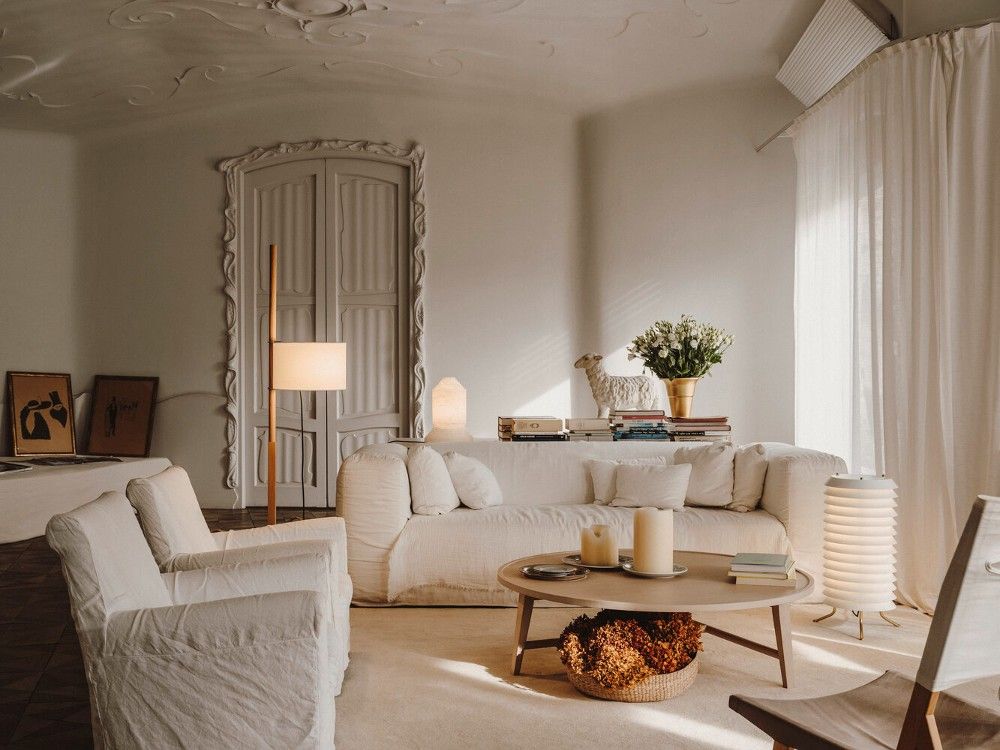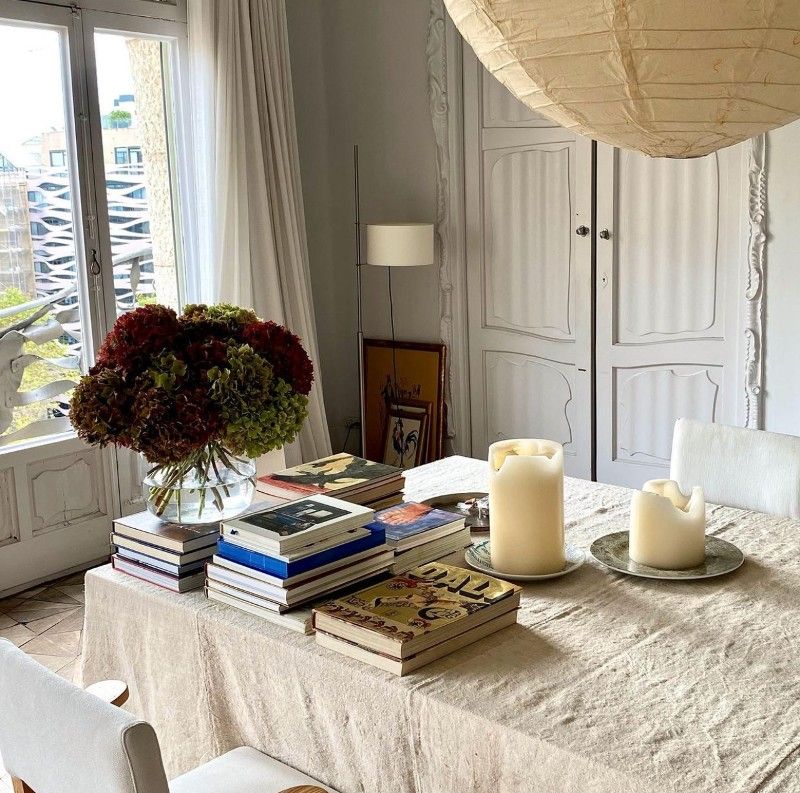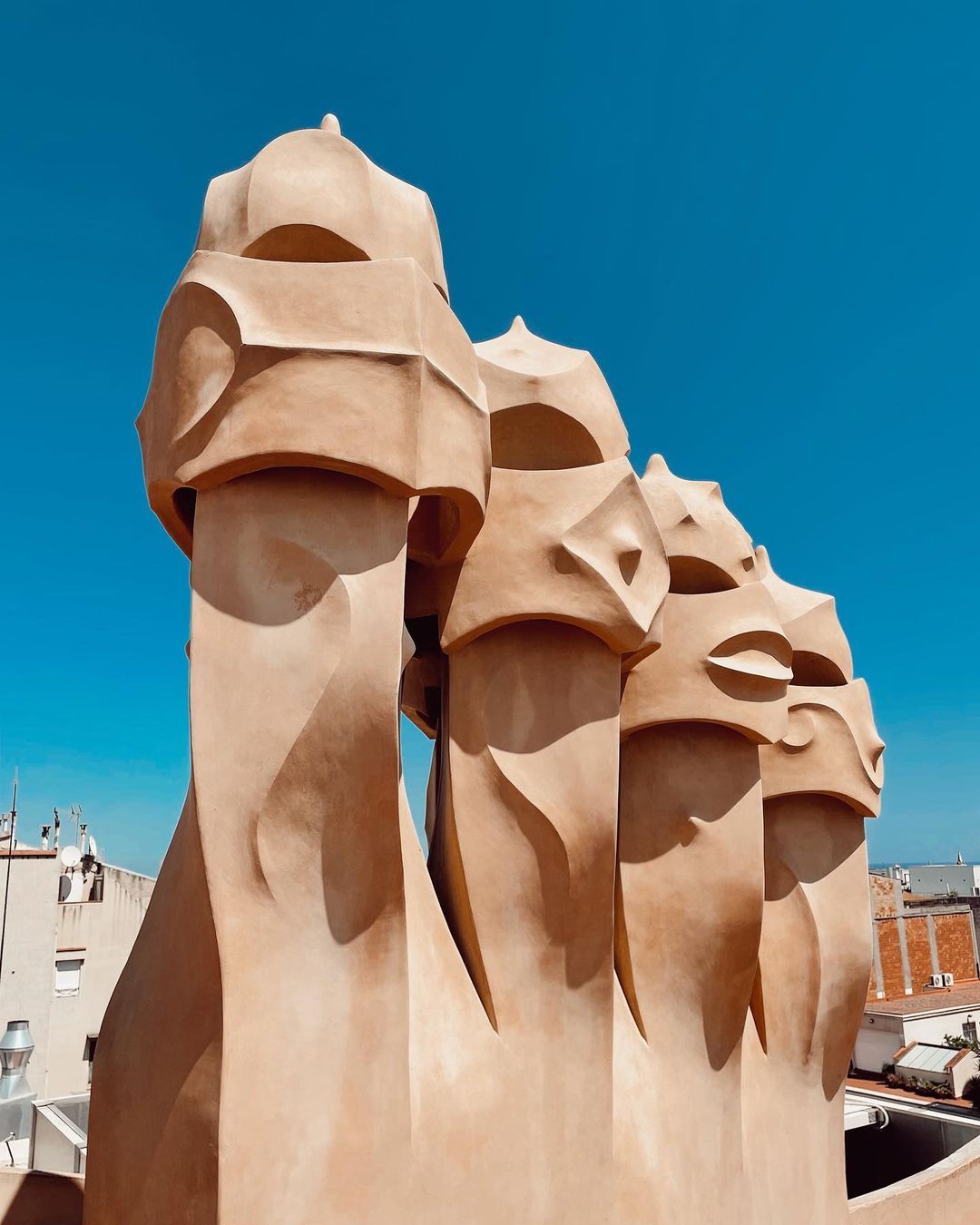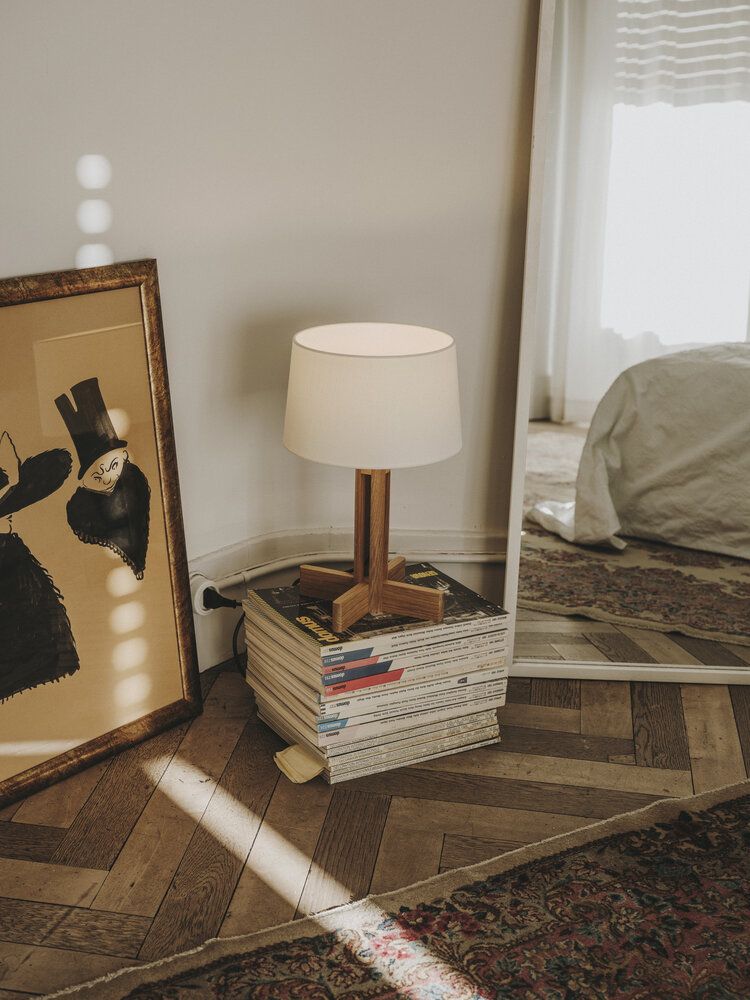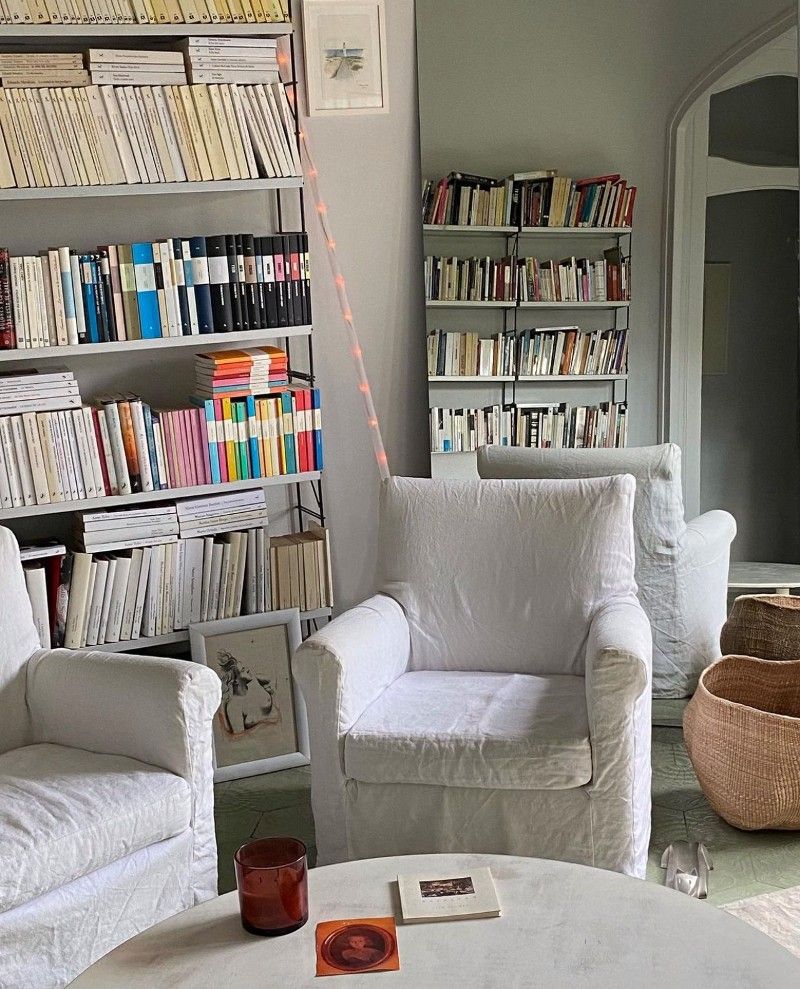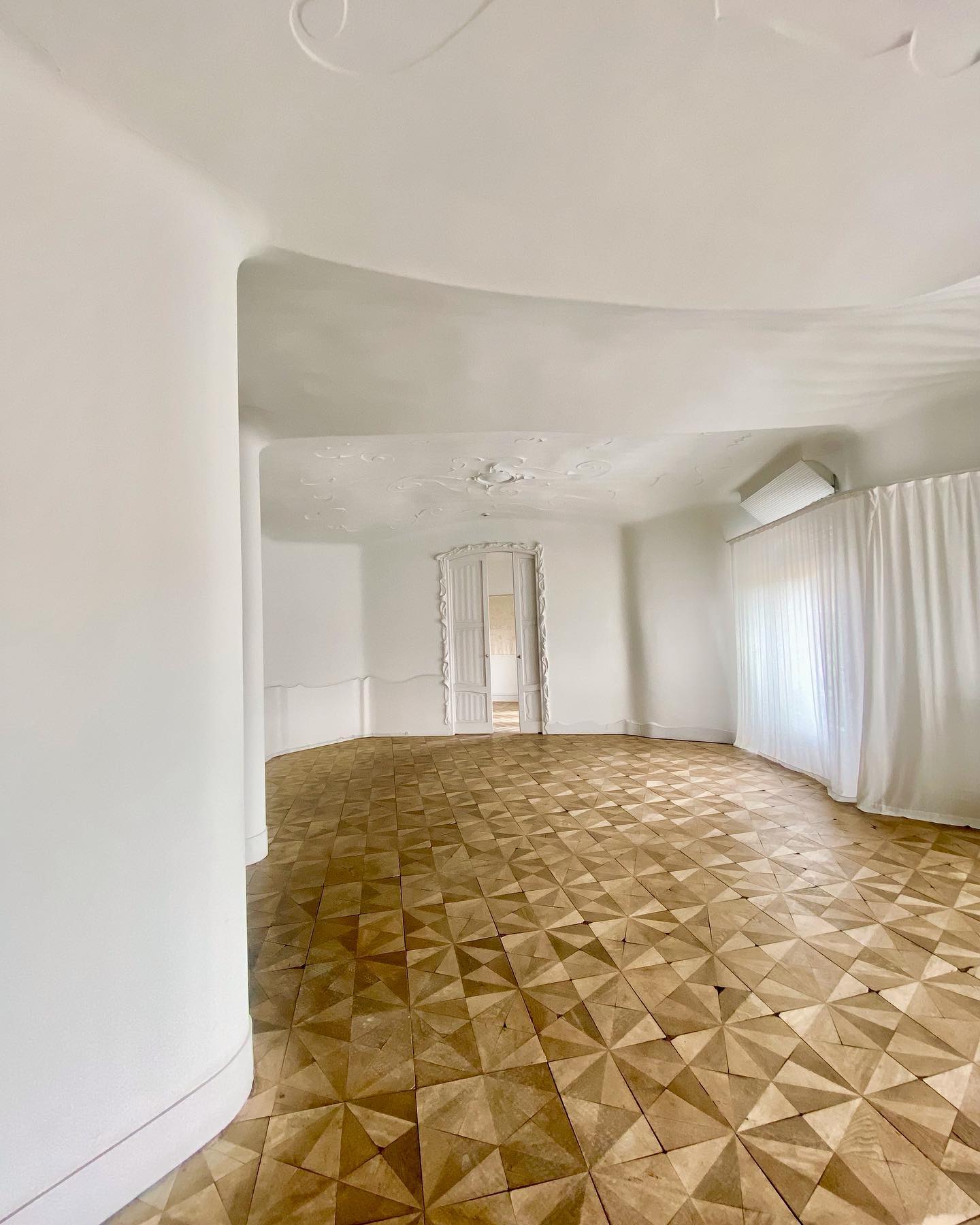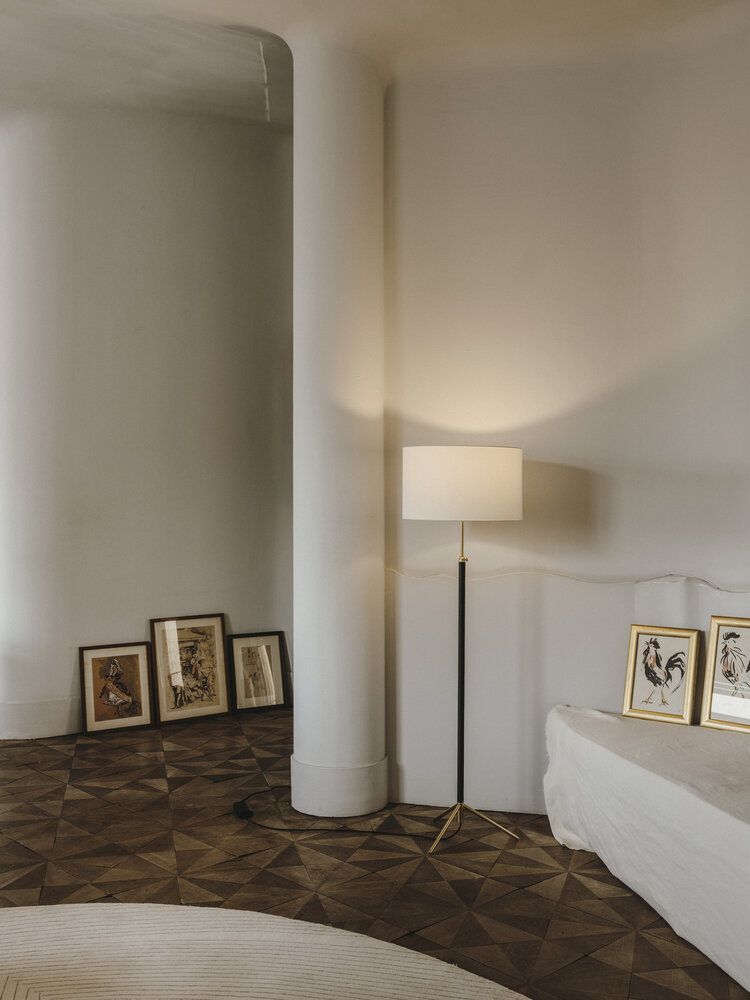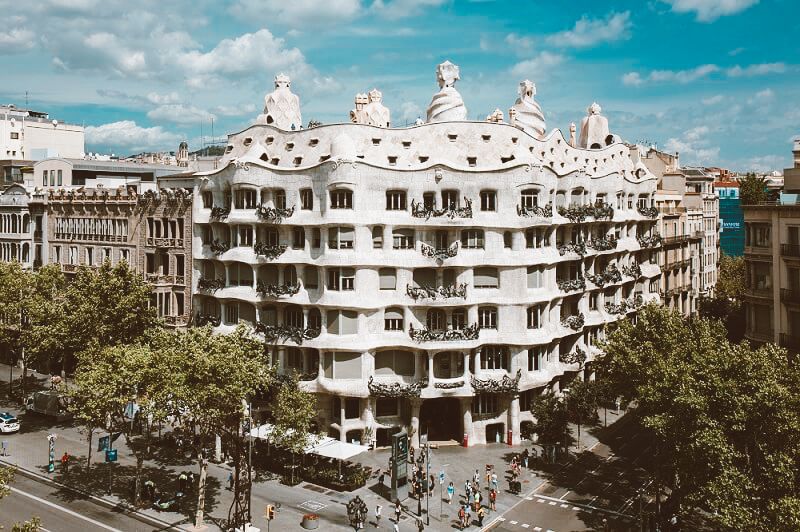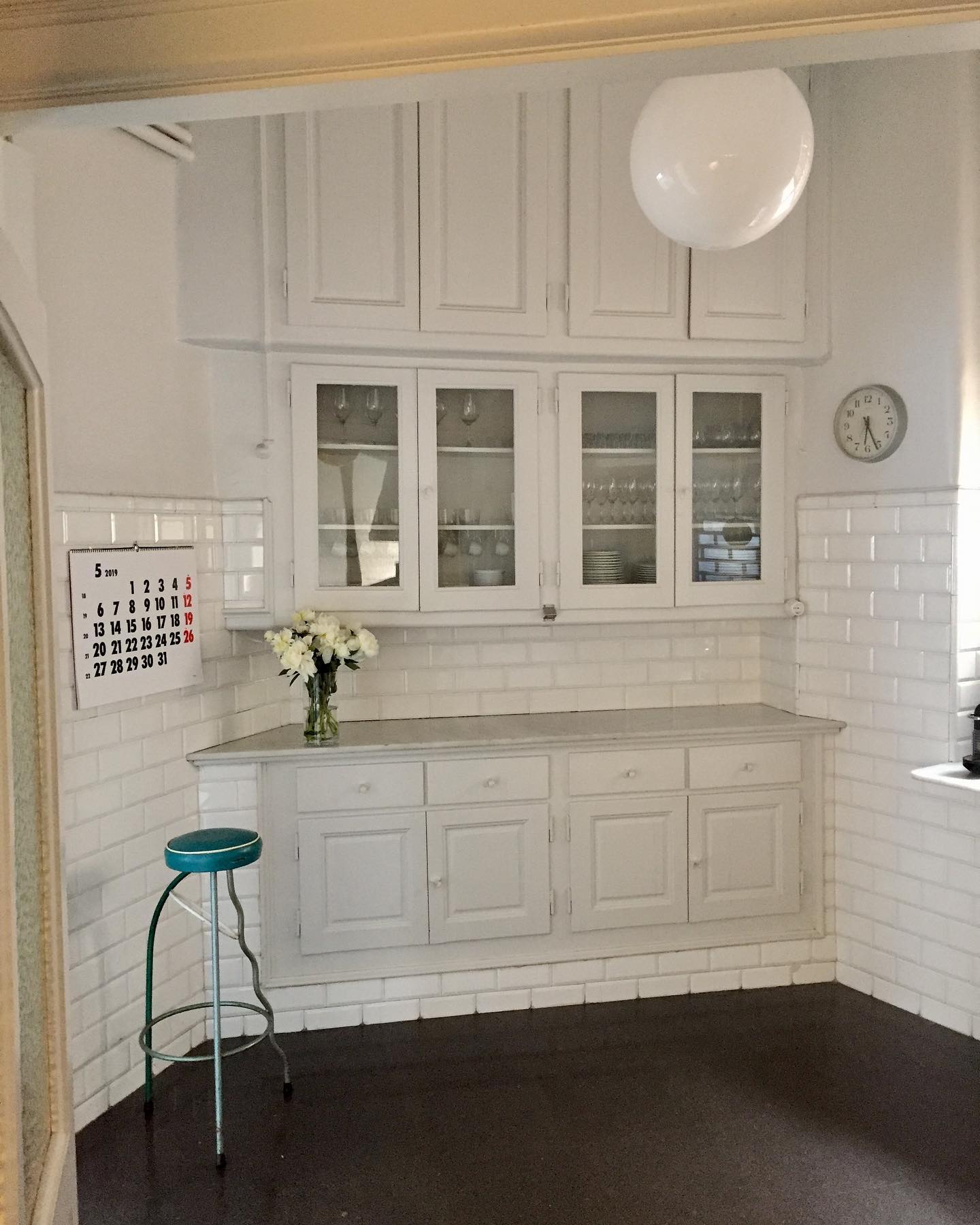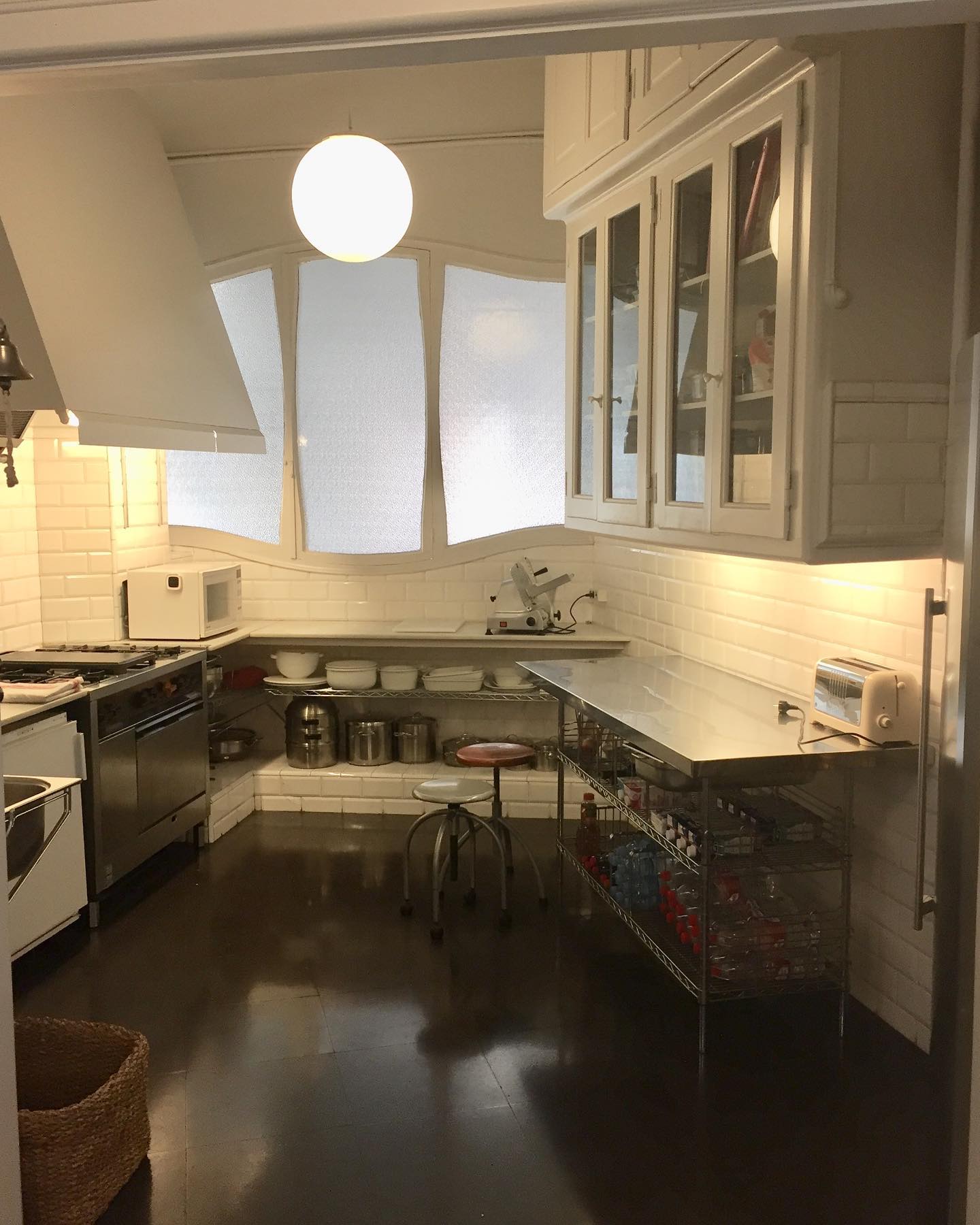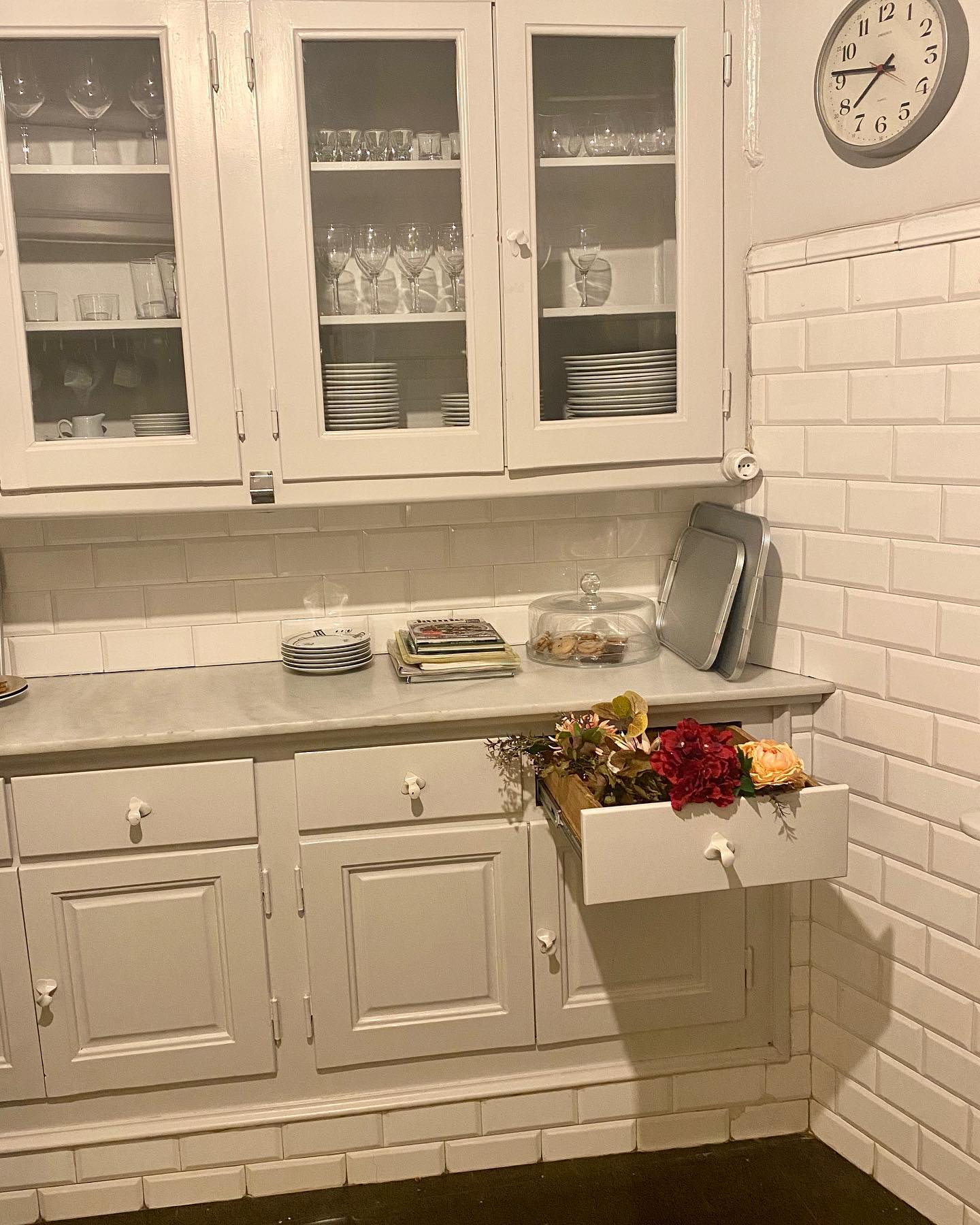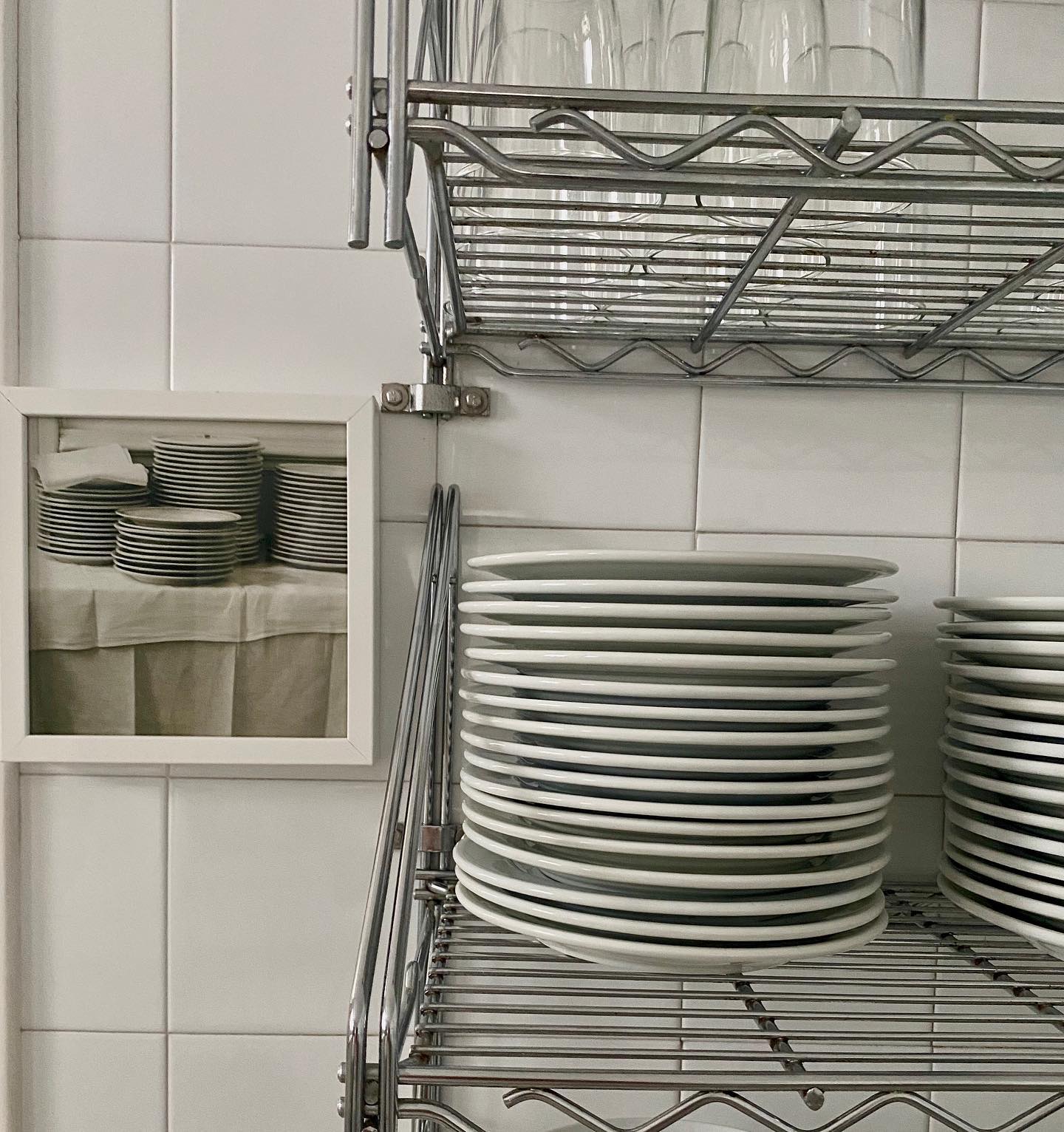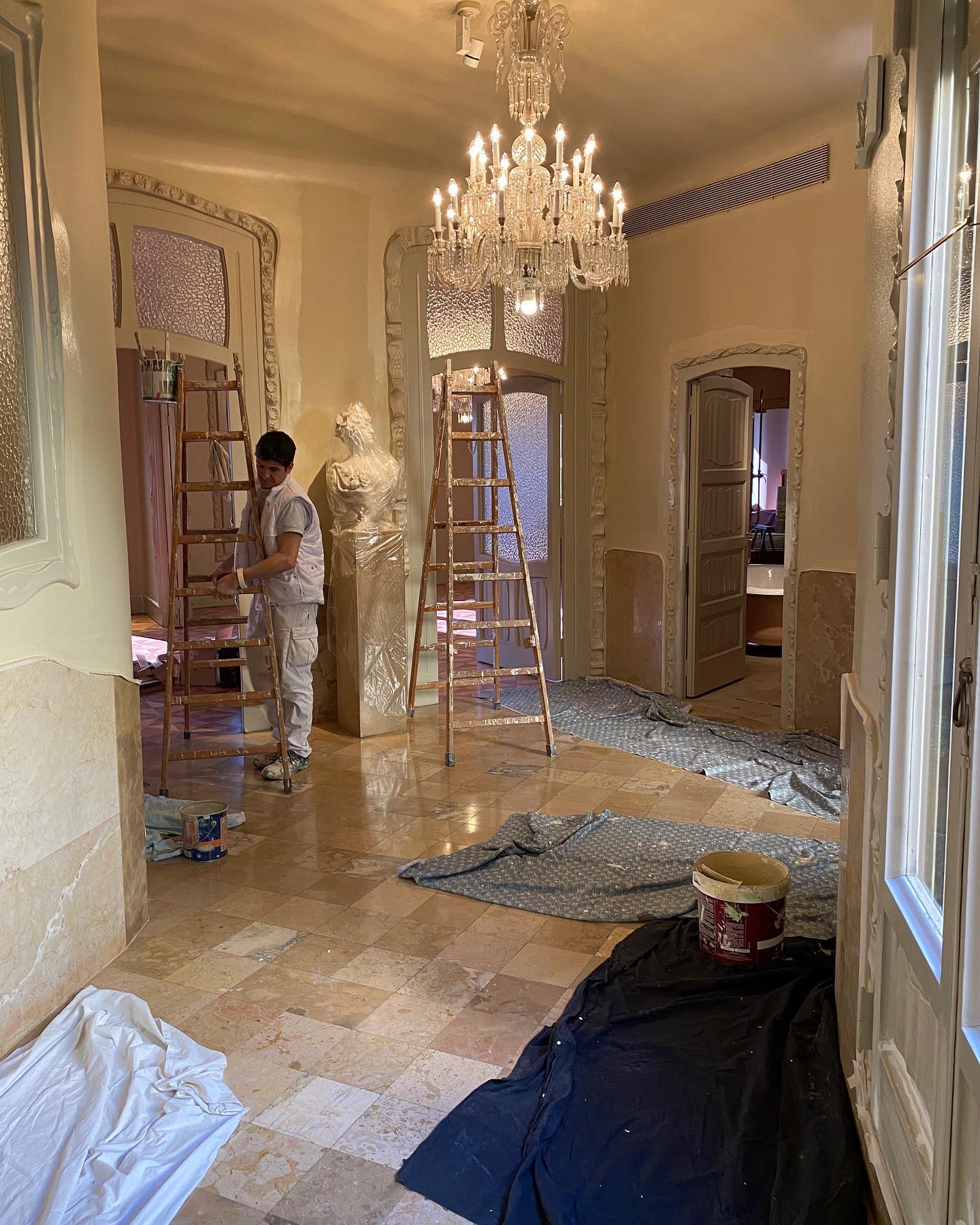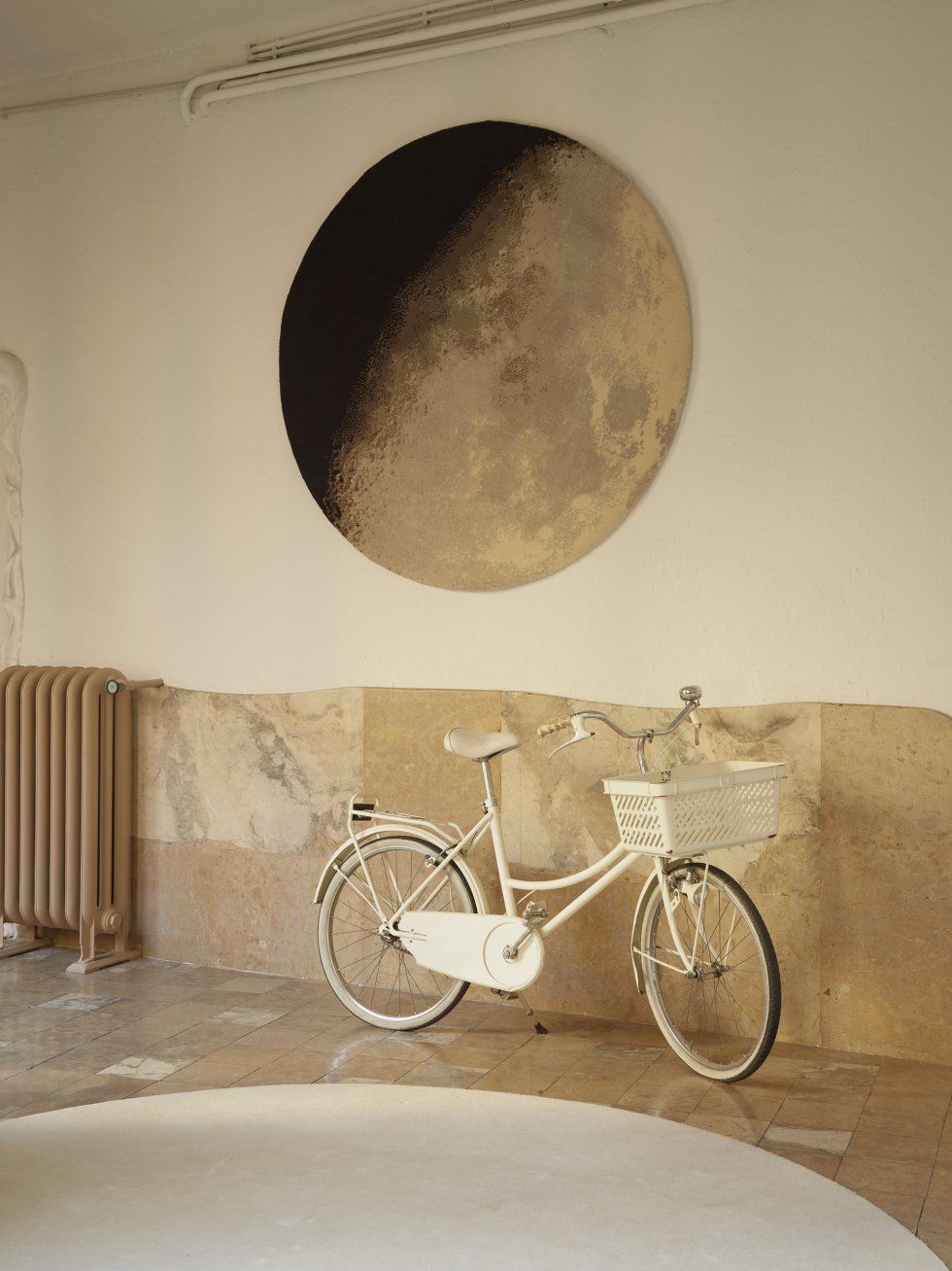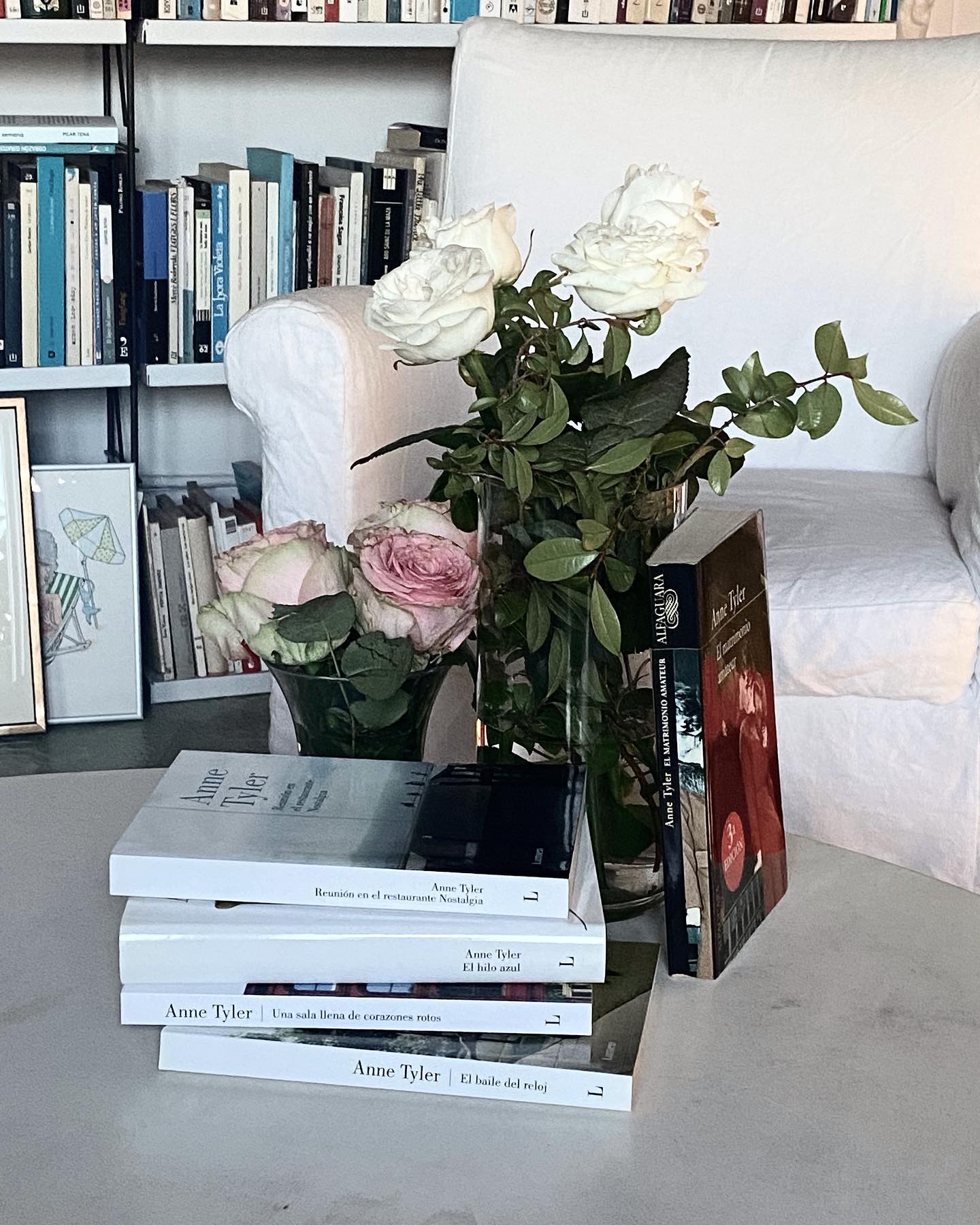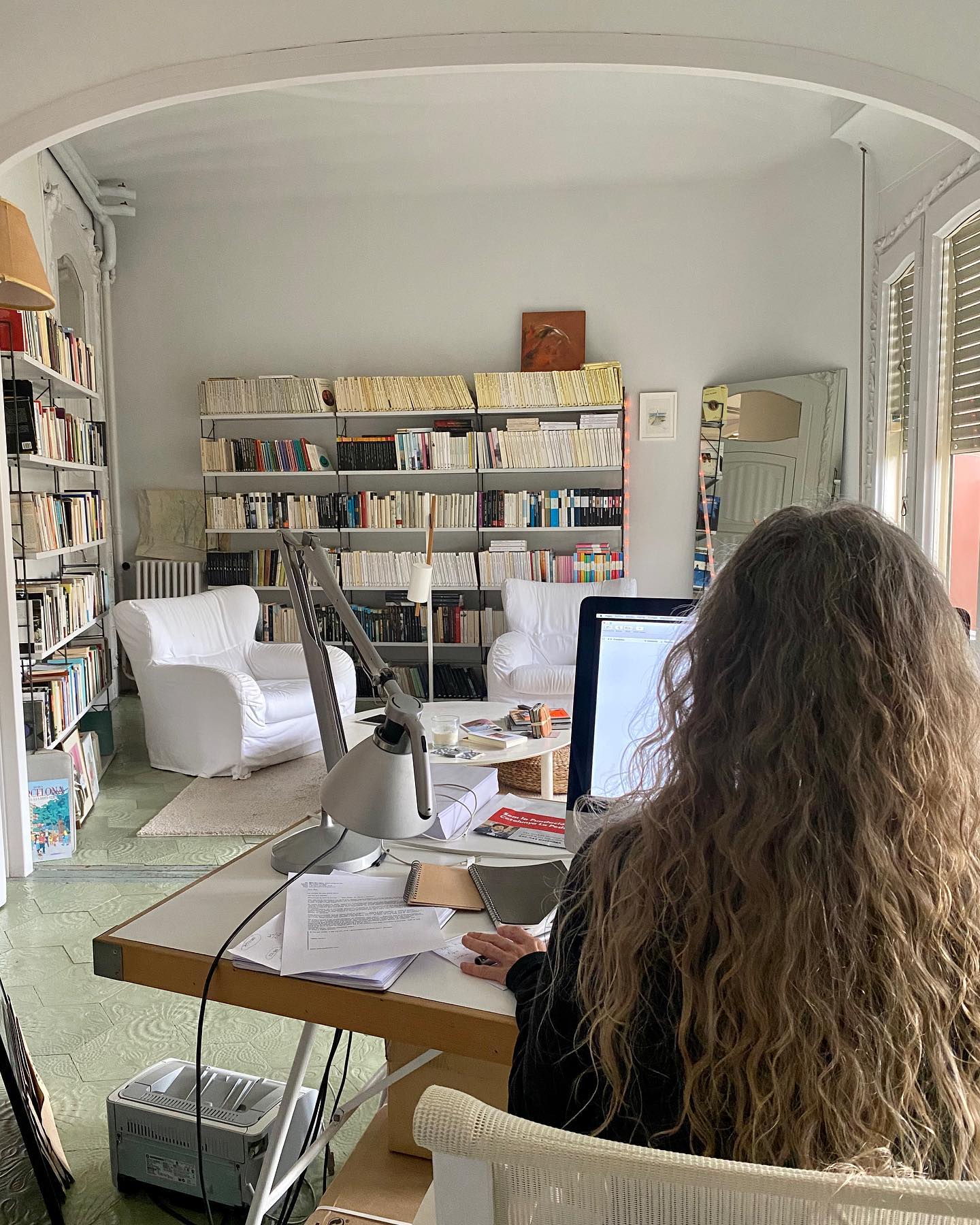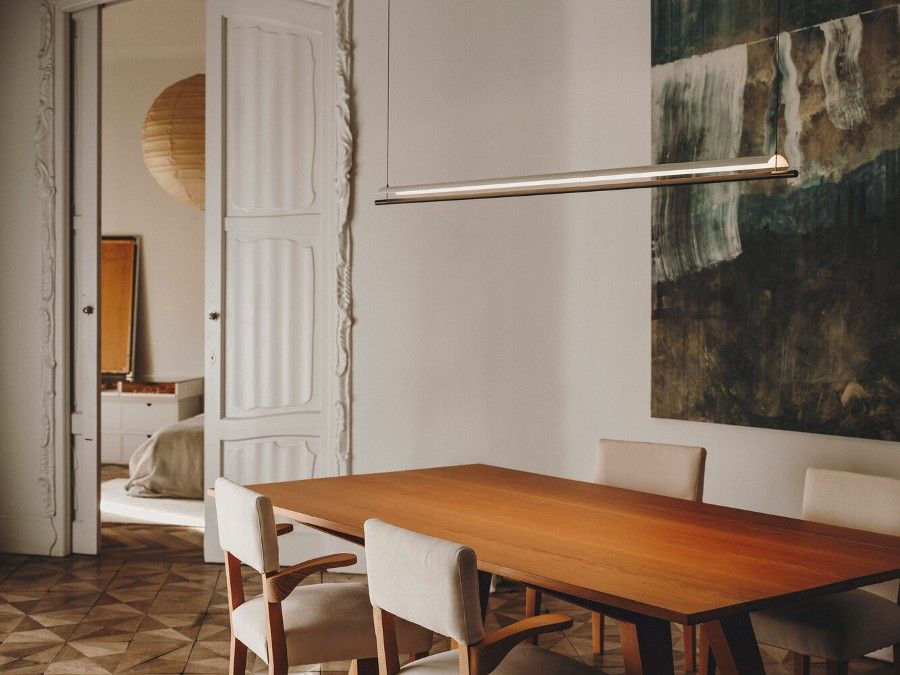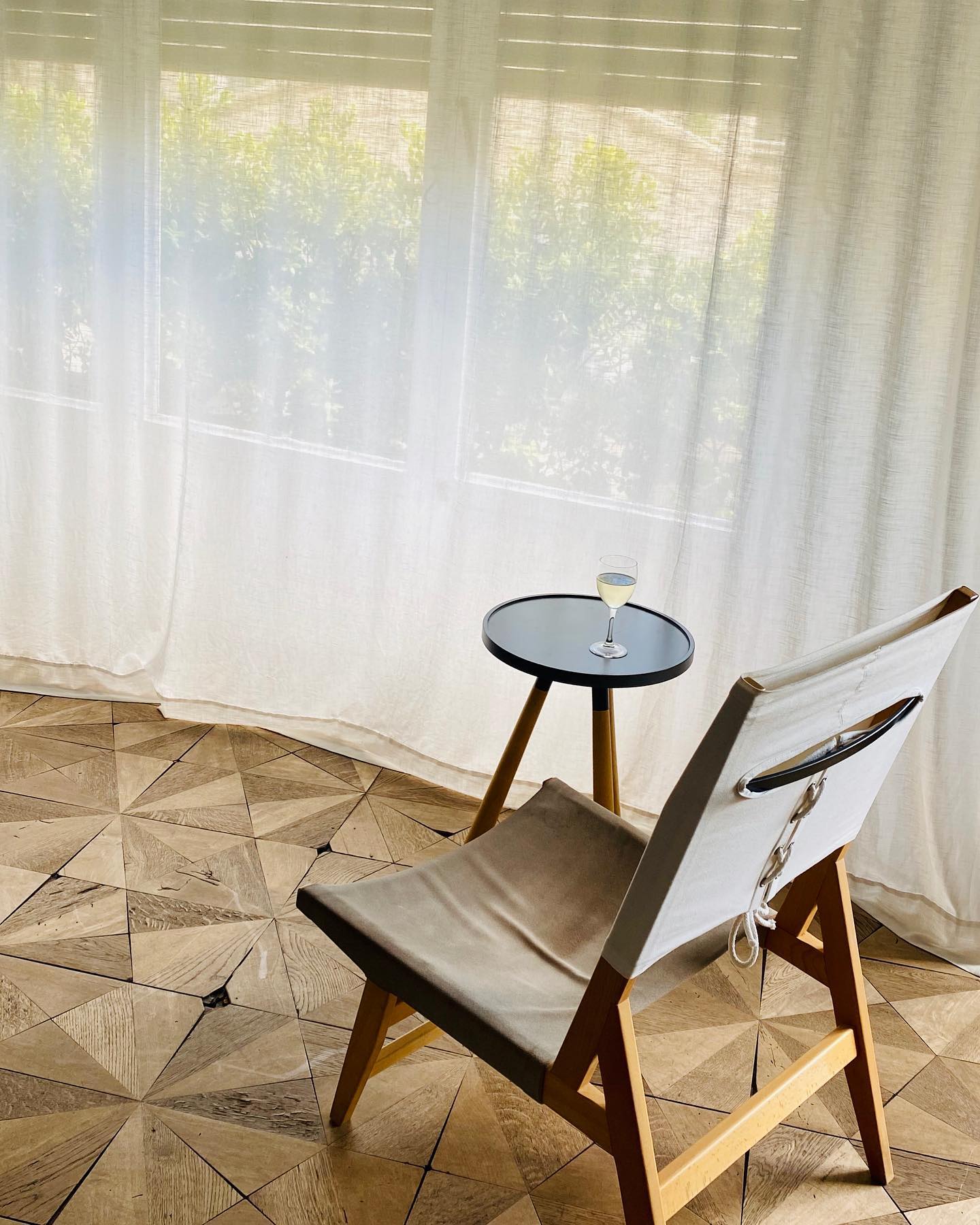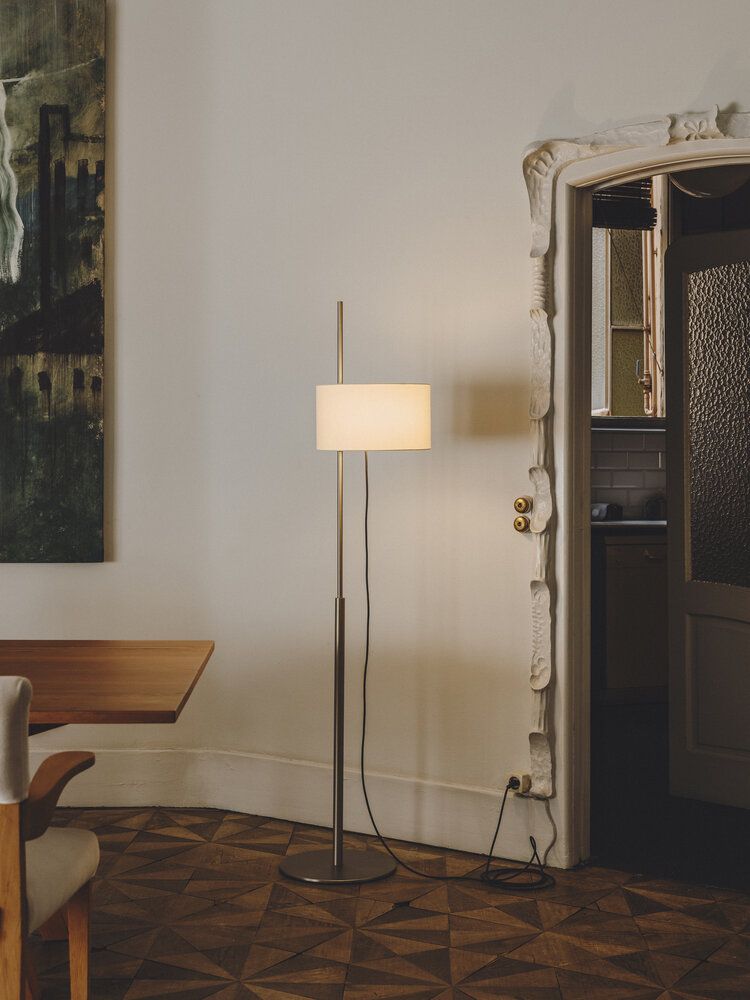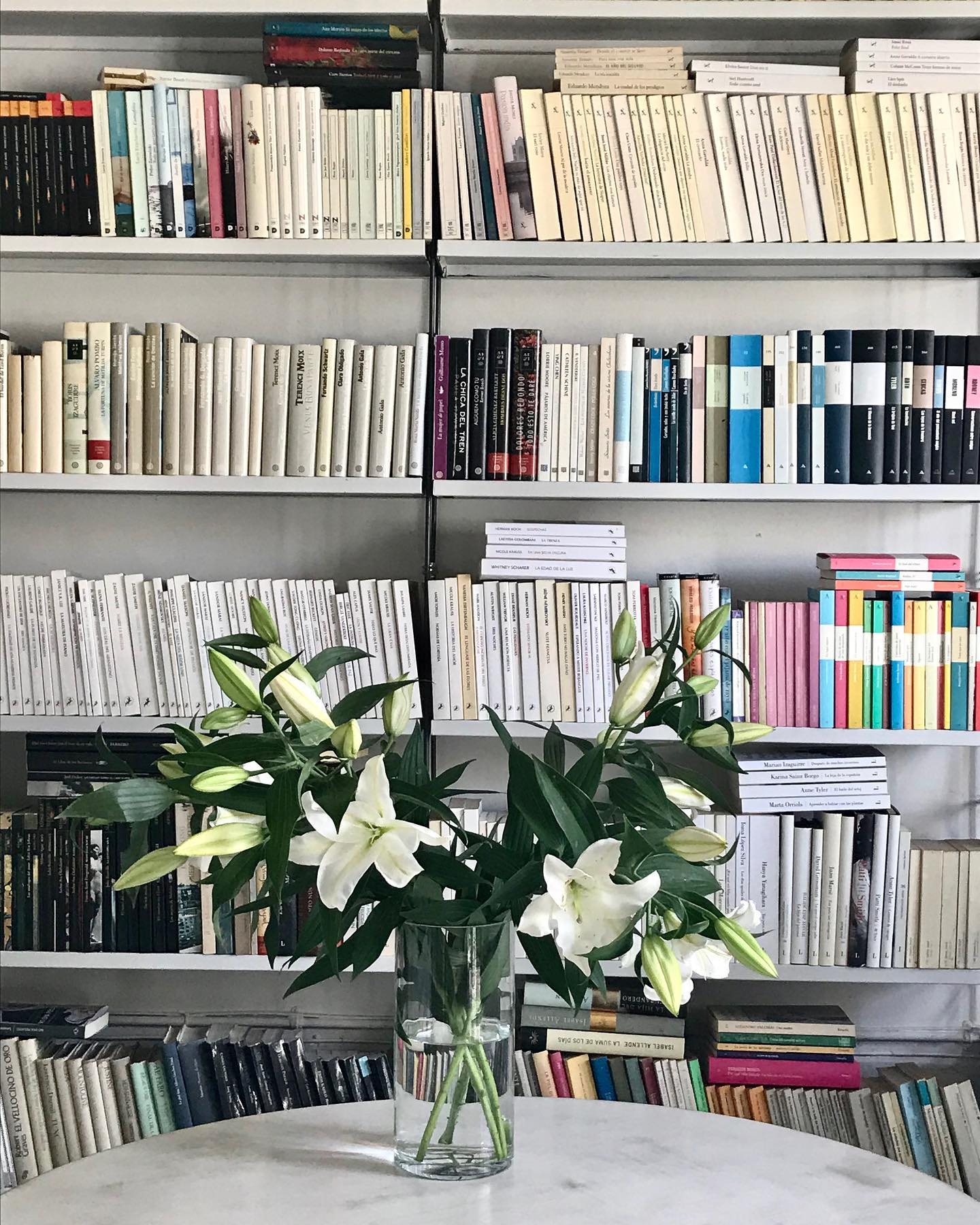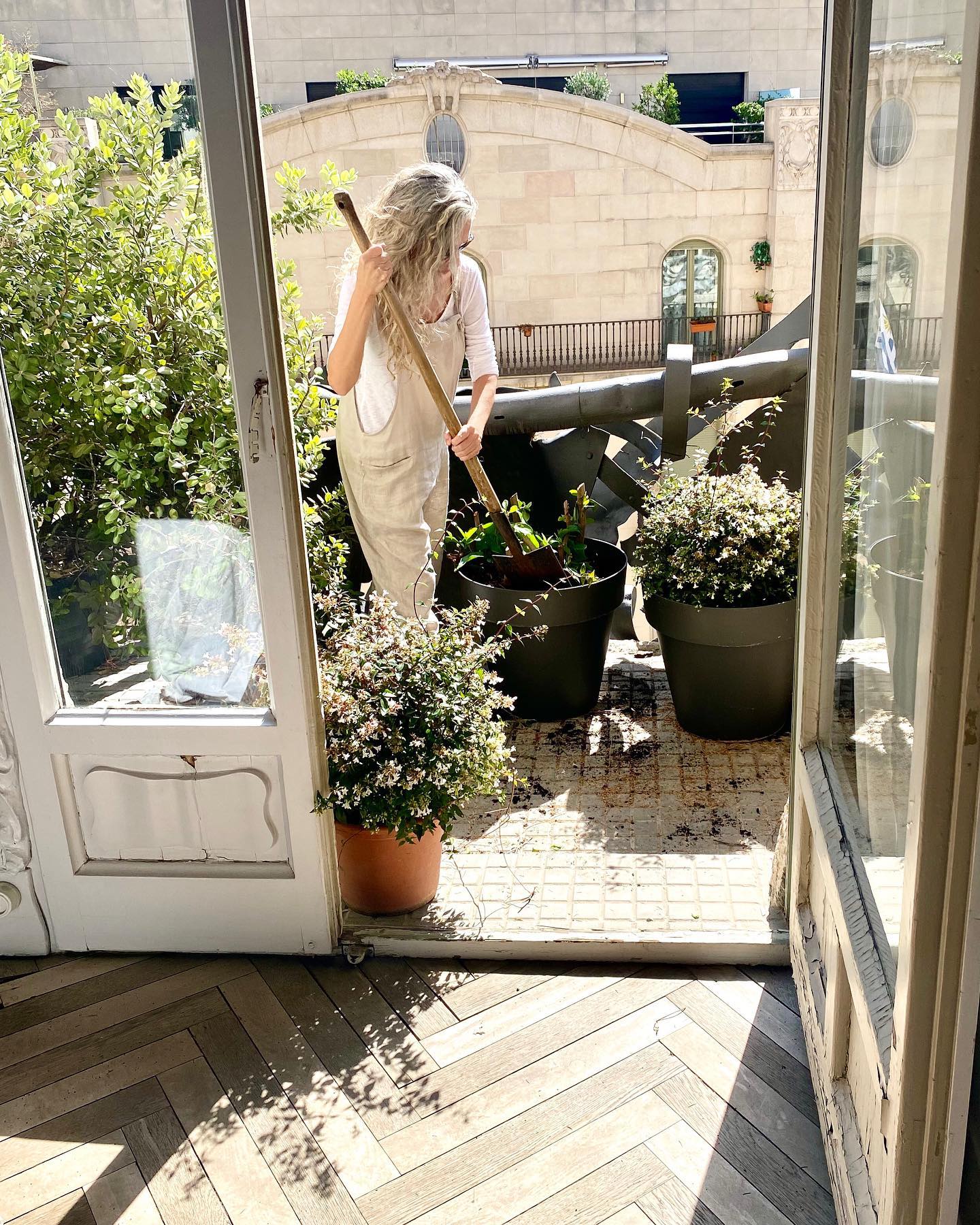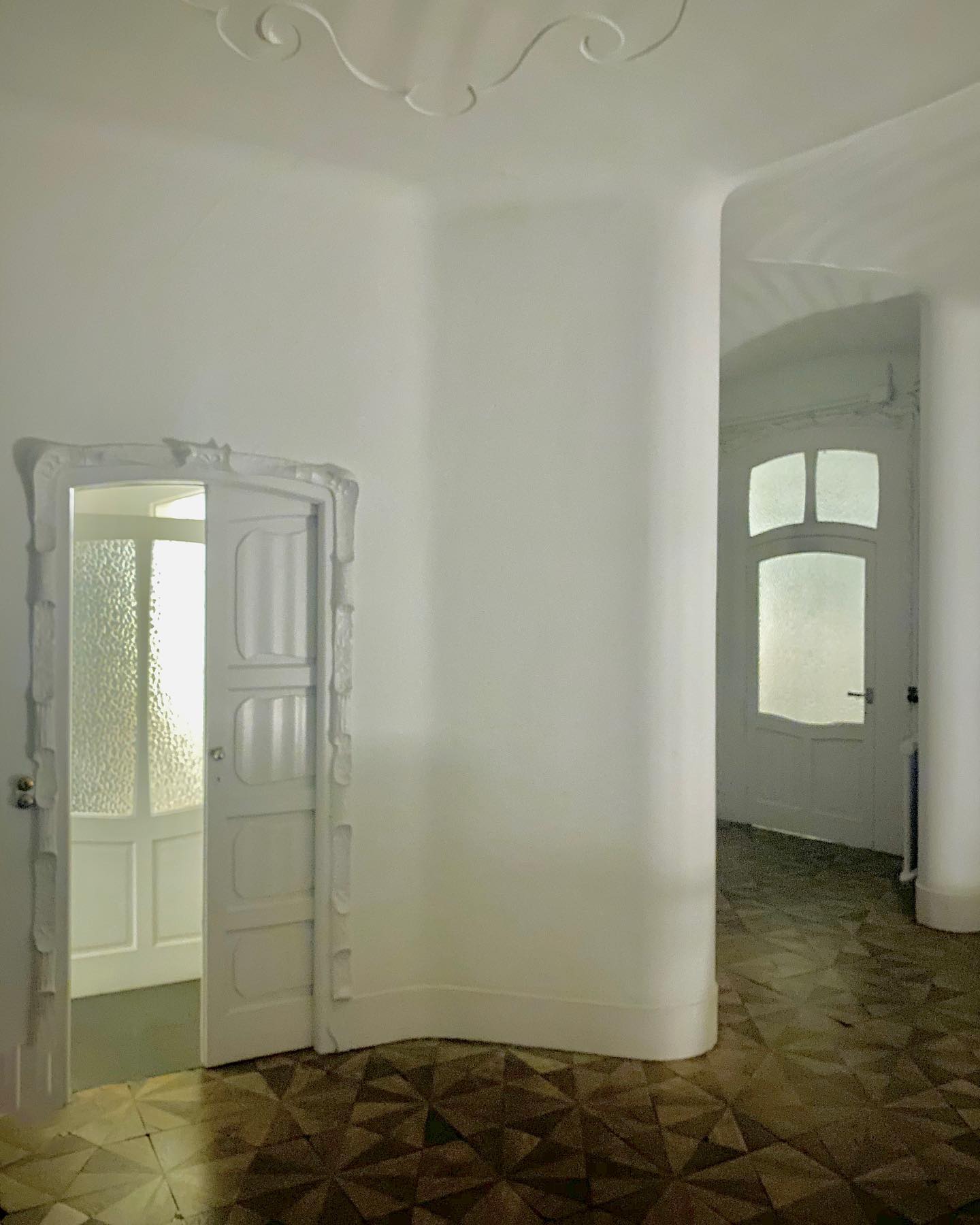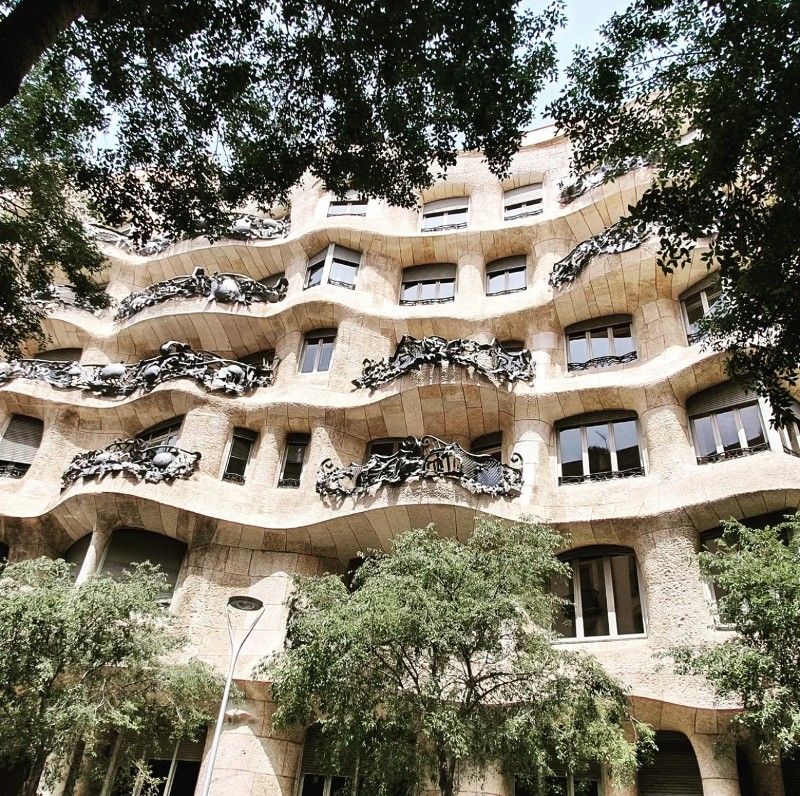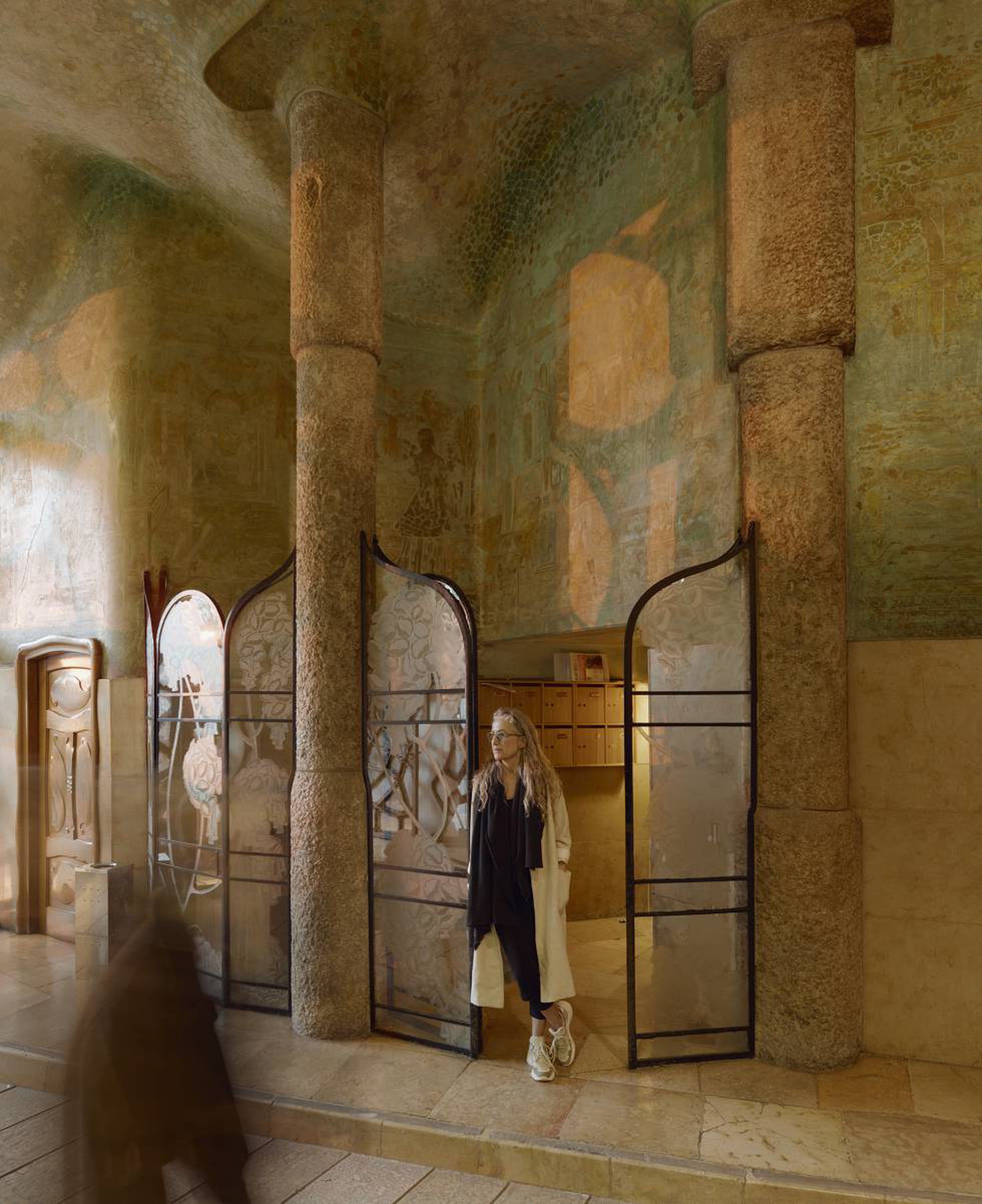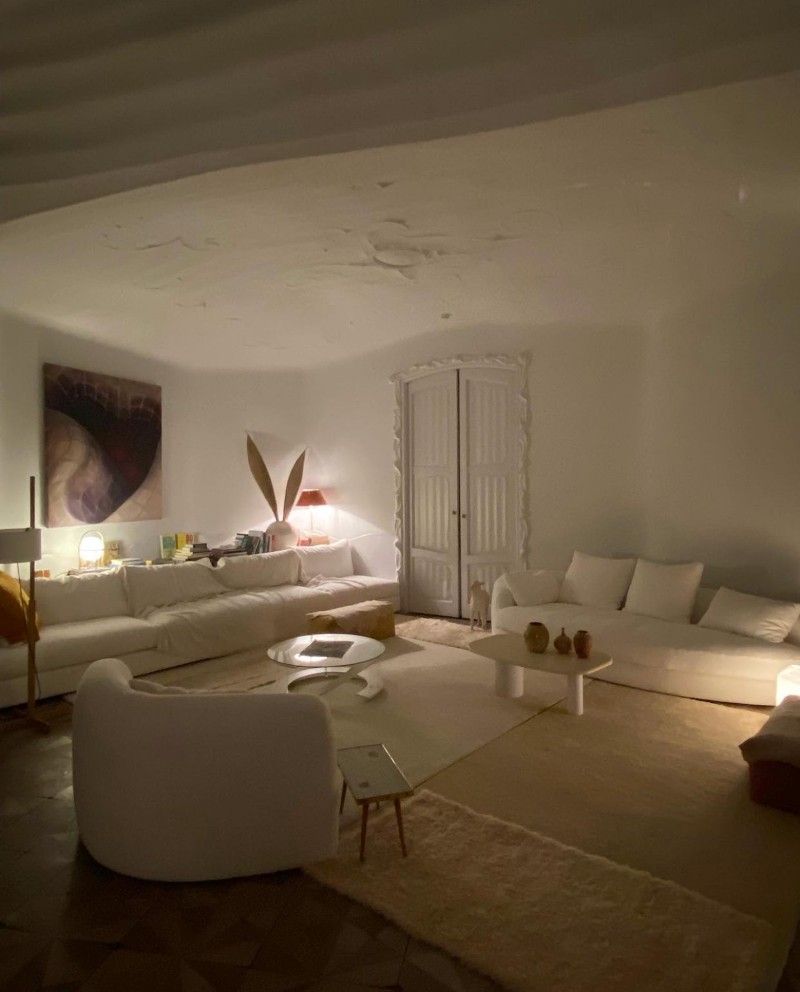Casa Milà is a Modernista building in Barcelona, Catalonia, Spain. It was the last private residence designed by architect Antoni Gaudí. Built between 1906 and 1912, the building was commissioned by Roser Segimón and her second husband, Pere Milà, in 1905 with the intention of living on the main floor and renting out the rest of the apartments, hence the name Casa Milà: the new home of the Milà family. The building is popularly known as La Pedrera (the stone quarry), in reference to its unconventional rough-hewn appearance.
Casa Milà consists of two buildings structured around two courtyards that provide light to its nine stories: the basement, ground floor, mezzanine, main (or noble) floor, four upper floors and an attic. The basement was used as a garage for parking (Barcelona’s first underground car park, in fact); the Milàs lived on the main floor (in a 1,323 square metre flat), and distributed over the rest of the floors were over 20 apartments that were available for rent. The attic housed laundry rooms and drying areas, and on the roof is the famous sculpture terrace, as well as skylights, emergency stairs, fans, and chimneys constructed out of brick covered with lime, broken marble, or glass, each with a specific architectural function. The different shapes and sizes of the two courtyards create an asymmetrical “8”, and the circular layout of the apartments helps all the rooms to harness natural light. The apartments also featured plastered ceilings with dynamic reliefs, handcrafted wooden doors, windows and furniture, as well as hydraulic tiles and other ornamental elements. The ceilings inside the apartments of Casa Milà vary: some are in high relief, while others bear inscriptions and even poems; all continue the undulating rhythms of the building’s façade. The main access to the apartments were by elevator except for the noble (main) floor, which was accessed by a prominent staircase. The stairways were intended to be used as service entries. As Gaudí wanted the building’s residents to all know each other, there were only elevators on every other floor, making it so that people on different floors would meet one another.
An apartment building for Barcelona’s nouveau riche at the time, Casa Milà, with its rippling limestone façade, sits at the corner of Carrer Provença and Passieg de Gràcia. The building, considered an eyesore among many locals, languished for decades (much like the rest of Barcelona), until the city was rediscovered and revamped as host city for the 1992 Olympic Games.

Above: Antoni Gaudí 's last completed work in Barcelona, the Casa Milà
Today, Casa Milà currently houses the central offices of the Catalunya La Pedrera Foundation and also continues to serve its original function as a block of rented residential apartments. Other uses for the building include tourism, with the building open to the public for visiting by day and night; as a cultural centre that hosts exhibitions, conferences and other activities; and as a commercial centre with space for hire, company offices, and shops on the ground floor. As mentioned previously, there are still rented residential apartments in the building that are home to families that have been living there for more than 70 years: three tenants to be specific. At least, there were three at the time. In 2019, El País reported that writer Ana Viladomi “is no longer one of the residents of La Pedrera: she is the last. Apart from a woman named Carmeta who is never there, she is the only tenant who continues to live among the cast iron pillars, stone chimneys, bright and airy courtyards and security paraphernalia.”
Ana Viladomiu has been living on the fourth floor of La Pedrera for the past 30 years. “I moved in here for love,” the author told Harper’s Bazaar once in an interview in 2020. It was the mid-eighties and her love was Fernando Amat, a champion of contemporary design and the owner of the homewares store Vinçon, located next door to La Pedrera. (The store closed in 2015 after 86 years). Amat was already living in the Casa Milà when the two met, as a tenant with a life-long rental agreement. Viladomiu, pregnant with their first child, moved in. After raising two daughters together, Amat moved out in 2015, leaving her alone in the 350-square-metre apartment⏤the daughters, Nina and María, who are both now architects themselves⏤long gone, trading the fishbowl life of La Predrera for the anonymity of apartments in the El Raval neighbourhood of Barcelona.
It was here that Viladomiu wrote her third book, La última vecina (The Last Tenant), a fictionalised account of her experience living in La Pedrera. In these photos, we catch a glimpse inside her fourth floor space in the historic building, which was declared a World Heritage Site by UNESCO in 1984.
Modernista Movement
Modernista refers to the 19th Century art and literature movement in Catalan Culture in Spain expressed through drawings, paintings, designs, decorative arts and architecture. The Modernisme movement was centred in the city of Barcelona (though it reached far beyond) and is best known for its architectural expression, especially in the work of Antoni Gaudí, Lluís Domènech i Montaner and Josep Puig i Cadafalch, but was also significant in sculpture, poetry, theatre and painting.
